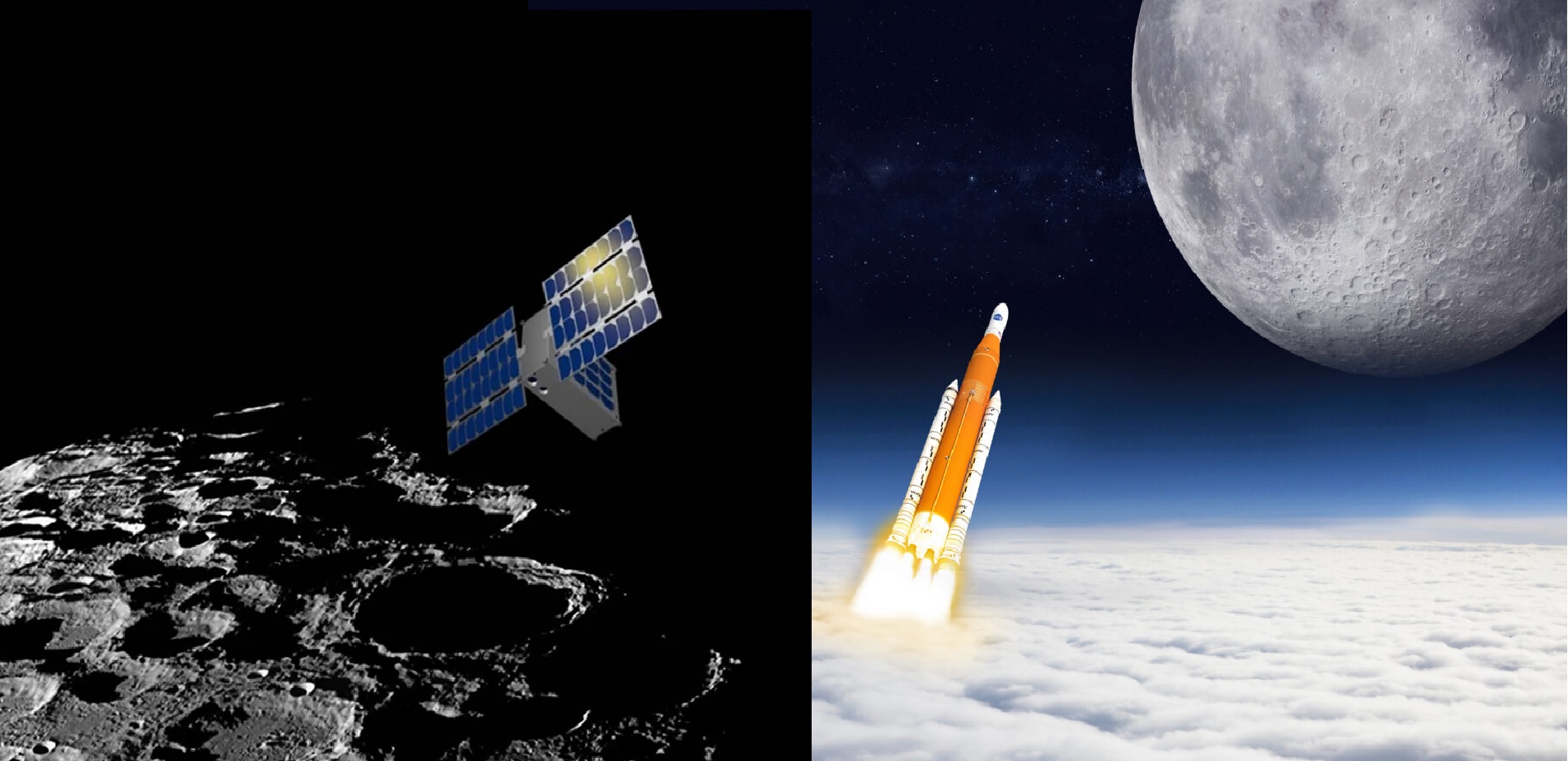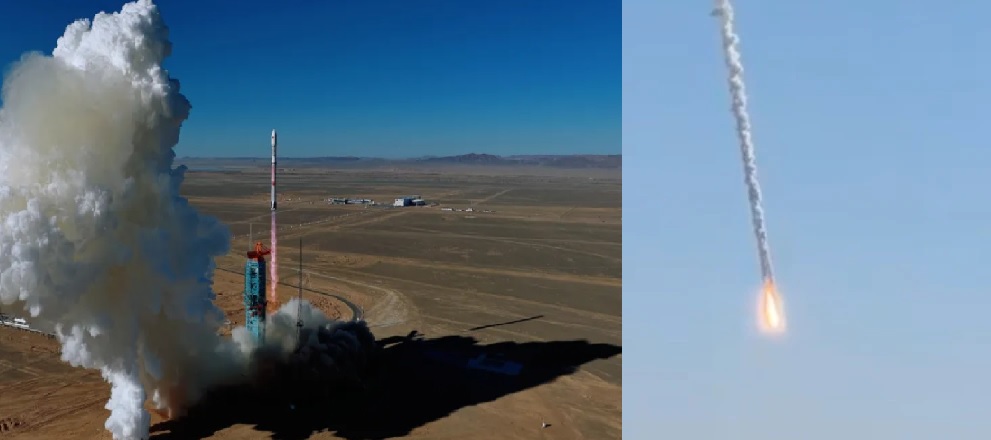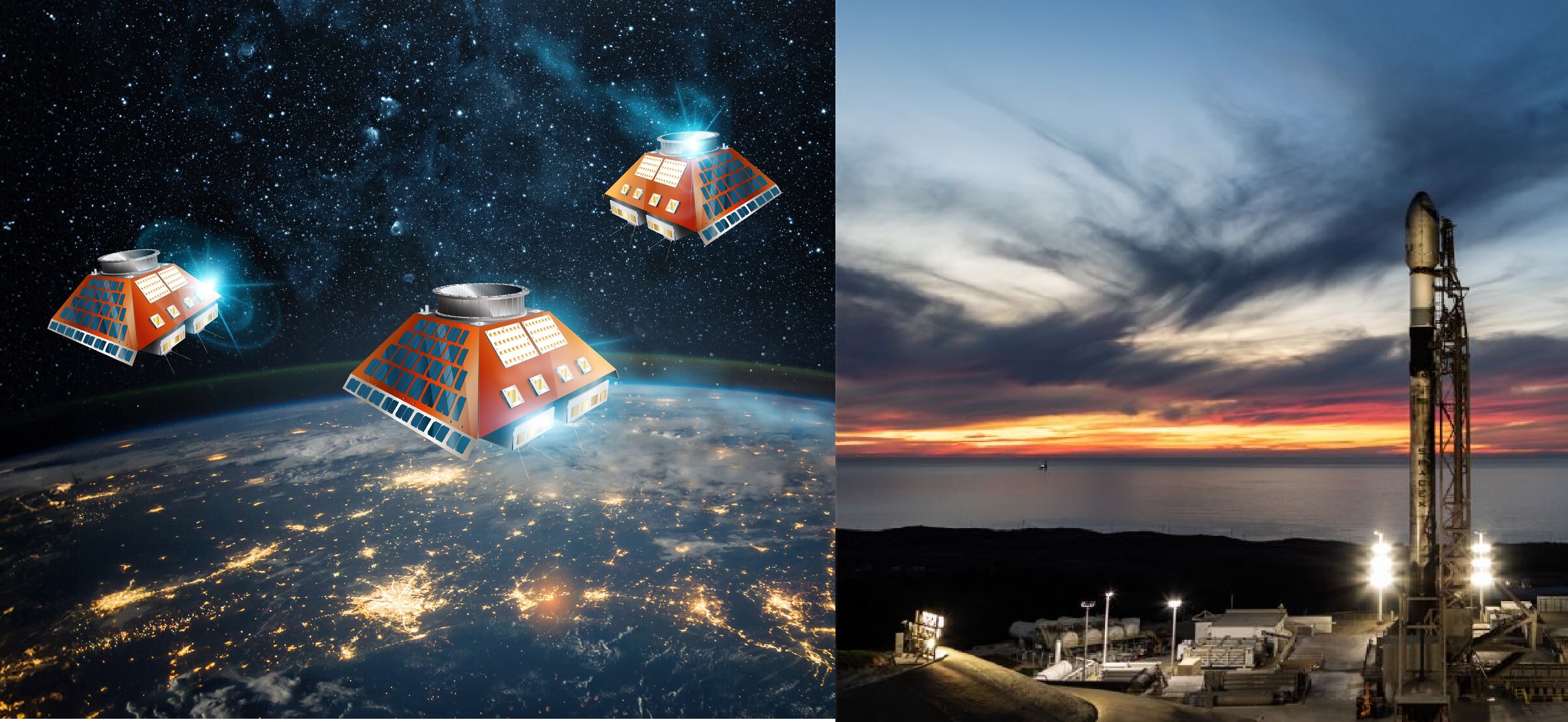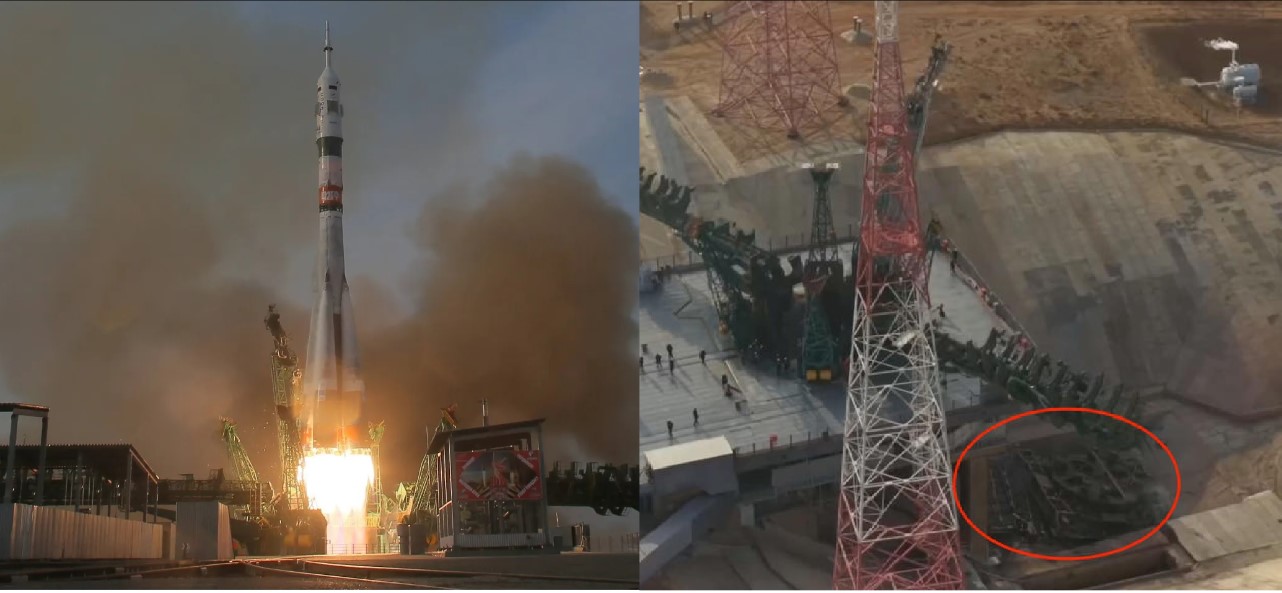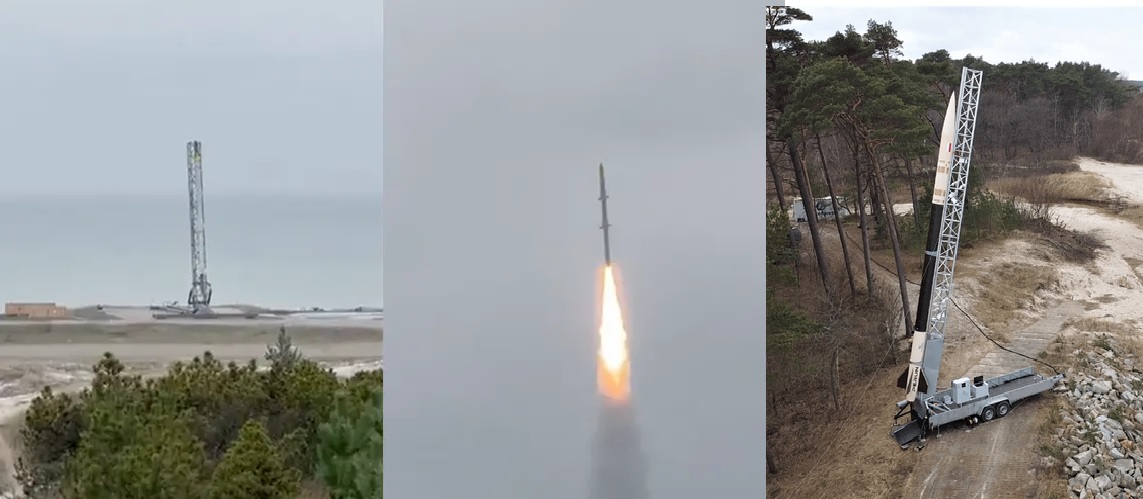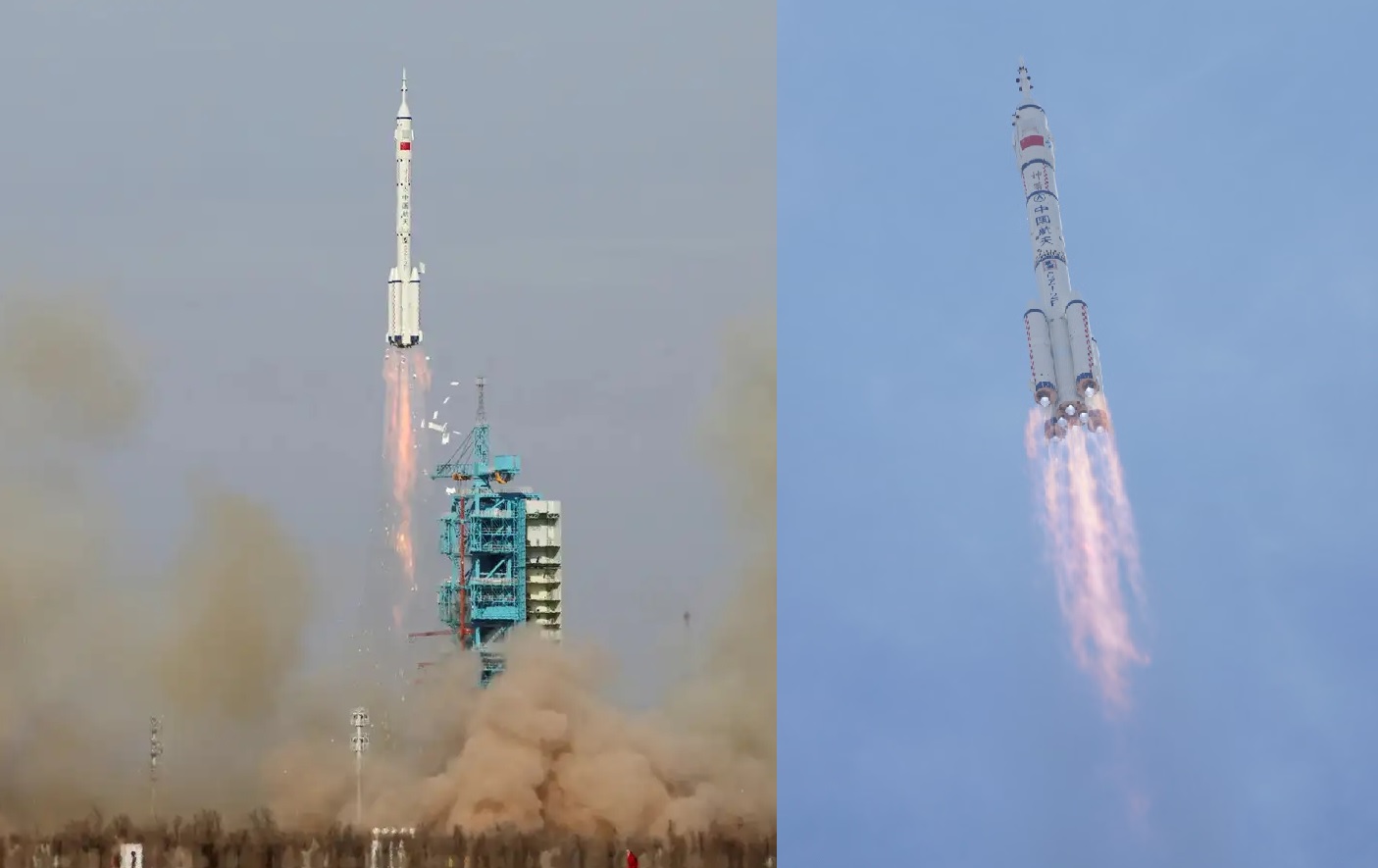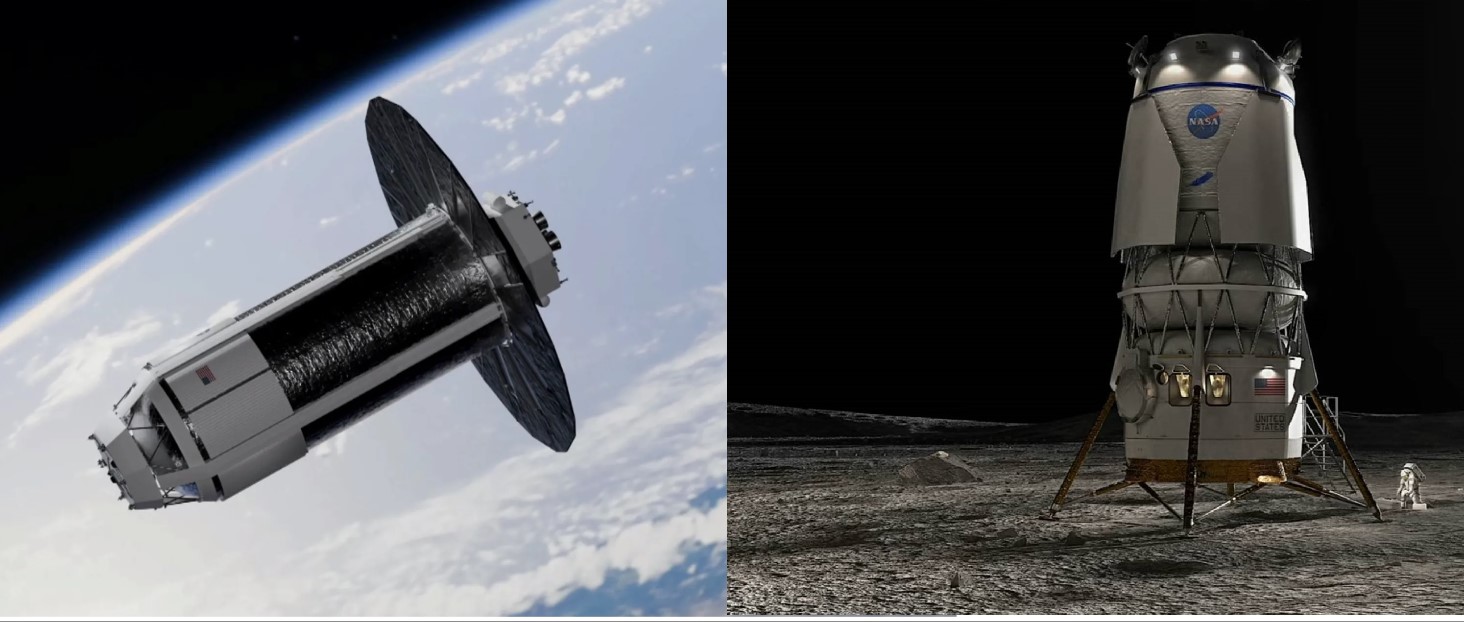Space & Technology
Chandigarh, December 19, 2025: The Indian Space Research Organisation (ISRO) has successfully completed a critical set of qualification tests for the Gaganyaan human spaceflight programme with the validation of the drogue parachute deployment system for the Crew Module. The tests were conducted on December 18 and 19 at the Rocket Track Research Facility (RTRS) of the Terminal Ballistics Research Laboratory (Terminal Ballistics Research Laboratory) in Chandigarh. The successful trials mark an important milestone in qualifying the parachute-based recovery system, which will play a vital role in ensuring the safe return of Indian astronauts to Earth. Validation Under Simulated Flight Conditions According to ISRO, the two-day qualification campaign confirmed the performance, reliability, and structural integrity of the drogue parachutes under a range of simulated flight conditions closely matching actual mission profiles. The drogue parachutes perform a critical function during descent, stabilising the Crew Module and reducing its velocity before the deployment of the main parachutes. The tests evaluated key parameters such as deployment timing, inflation behaviour, opening shock loads, aerodynamic stability, and suspension line loads. Data gathered through onboard sensors and high-speed imaging systems showed consistent and predictable parachute performance, meeting the stringent human-rating safety requirements defined for the mission. High-Speed Ground Testing at RTRS Facility The qualification trials were carried out using the RTRS rocket sled track, a specialised ground-test infrastructure capable of accelerating test vehicles to near-flight velocities. This facility allows engineers to recreate realistic descent dynamics on the ground, enabling precise evaluation of parachute deployment without the complexities of airborne testing. ISRO officials said the controlled test environment helped validate design models, confirm safety margins, and generate high-quality data essential for crew safety certification. Major Step Toward Gaganyaan Mission Readiness The drogue parachute system forms part of a multi-stage parachute recovery architecture developed for the Gaganyaan Crew Module (Gaganyaan). After drogue deployment, pilot parachutes and main parachutes are sequentially released to further decelerate the capsule for a safe splashdown. Each stage incorporates redundancy to ensure reliability under off-nominal conditions. With the successful completion of the drogue parachute qualification, ISRO will now move toward integrated testing of the full parachute chain, including main parachute qualification trials and combined system demonstrations, which are essential before uncrewed and crewed mission phases. Strengthening India’s Human Spaceflight Capabilities The achievement underscores the growing technical maturity of India’s human spaceflight programme and highlights strong collaboration between ISRO and national defence research institutions. Officials described the outcome as a significant boost to confidence as the programme advances toward its long-term objective of independent crewed space missions. As the Gaganyaan programme progresses, ISRO will continue a rigorous sequence of subsystem validations, integration tests, and mission simulations, ensuring that every element of the flight and recovery system meets the exacting standards required for safe human spaceflight.
Read More → Posted on 2025-12-20 14:48:38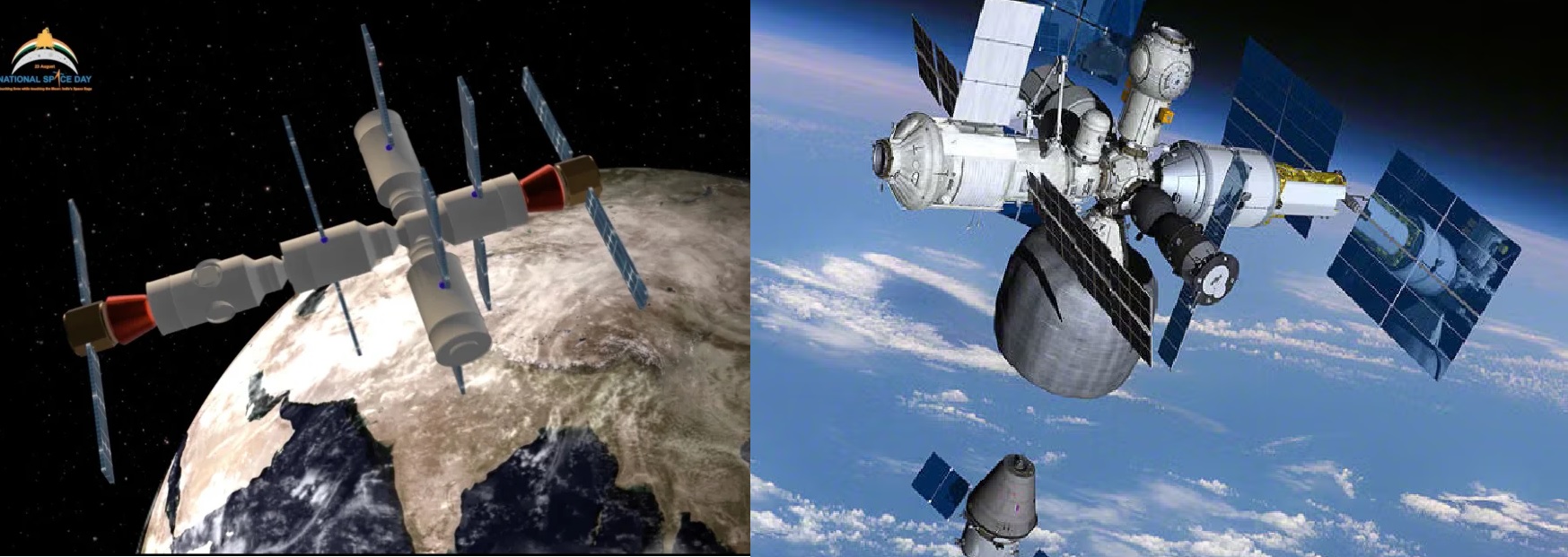
Russia and India Plan to Place Their New Space Stations in the Same 51.6° Orbit After ISS Retirement
Space & Technology
Russia and India Plan Matching Orbits for Their Post-ISS Space Stations Russia and India are preparing to keep human spaceflight in low Earth orbit on a familiar path after the retirement of the International Space Station (ISS), agreeing in principle to place their future space stations in the same 51.6° orbital inclination once the ISS is decommissioned. According to social-media reports from space analysts who tracked the visit, Roscosmos chief Dmitry Bakanov told journalists in New Delhi that the planned Russian Orbital Station (ROS) and India’s Bharatiya Antariksh Station (BAS) will share that inclination, mirroring the ISS orbit and enabling close operational cooperation between the two outposts. A Shared Lane in the Sky After the ISS The ISS currently circles Earth at an inclination of 51.6°, a compromise chosen so Russian Soyuz and Progress vehicles could reach it from Baikonur while still giving broad coverage of the populated world. NASA and its partners have committed to operating the ISS through 2030, after which a dedicated deorbit vehicle will guide the station into the Pacific, ending more than three decades of continuous operations. By choosing the same orbital geometry for ROS and BAS, Moscow and New Delhi are effectively planning a continuous “replacement belt” in low Earth orbit. After the ISS is retired, crewed spacecraft launched from Russia and India would still be able to reach a major laboratory complex without radically changing launch trajectories or infrastructure, and—crucially—could, in principle, travel between the two stations with relatively modest maneuvers compared with a full plane-change. Bakanov’s New Delhi comments build on a broader Roscosmos–ISRO understanding that the two stations should be able to support cross-visits, resource sharing and coordinated operations once both are flying. Bharatiya Antariksh Station: India’s 52-Ton Orbital Laboratory India’s planned Bharatiya Antariksh Station (BAS) is now in an advanced design phase at the Indian Space Research Organisation (ISRO). Government documents and recent briefings outline a modular outpost of about 52 tonnes, operating at 400–450 km altitude and an inclination of about 51.5–51.6°, with a nominal crew of 3–4 astronauts and short-duration capacity for up to six. Key milestones have recently been firmed up at cabinet level. In September 2024, India’s Union Cabinet approved the development and launch of the first station module, BAS-01, with a target launch around 2028. That base module—unveiled as a full-scale mock-up during National Space Day 2025 in New Delhi—will test India’s indigenous life-support systems, docking and berthing mechanisms, and power systems in orbit before additional science and laboratory modules are added through the 2030s. ISRO’s current roadmap foresees: Launch of BAS-01 in 2028 Progressive addition of core, science, lab and common-berthing modules using LVM3 and upgraded launchers Full operational capability by around 2035, assuming Gaganyaan crewed flights ramp up as planned and associated technologies—robotic arms, docking systems, and long-duration life support—are validated in earlier missions. By keeping BAS near the ISS-style orbit, India gains the same advantages that made 51.6° attractive to NASA and Roscosmos: overflights of roughly 90–95% of inhabited Earth, broad ground-station visibility, and compatibility with a wide range of launch sites and visiting vehicles. Russian Orbital Station: From Polar Orbit to an ISS-Like Track Russia’s Russian Orbital Service/Orbital Station (ROS/ROSS) has been under development as Moscow’s post-ISS foothold in low Earth orbit. Official plans call for the first science-power module (NEM-1) to launch around 2027 atop an Angara-A5M rocket from the Vostochny Cosmodrome, with three more core modules forming a complete station by about 2030, and additional “special-purpose” segments arriving by 2033. Until recently, public design documents and statements described ROS in a near-polar, sun-synchronous orbit around 97–98° inclination, optimized for sweeping coverage of the entire Earth and particularly the Arctic. However, Russian officials have now indicated that the station’s orbit is being reconsidered. According to an Interfax report circulated in Russian and international space forums, First Deputy Prime Minister Denis Manturov said a decision had been taken to change ROS’s planned orbit from a near-polar track to 51.6°, aligning it with the ISS and, by extension, India’s BAS. Bakanov’s New Delhi remarks appear to confirm that shift, explicitly tying the new inclination to joint operations with India. In practice, such a configuration would still allow Russia to conduct Earth-observation and technology-demonstration missions, but with the added benefit of easy access from traditional launch corridors and the ability to host foreign crews and spacecraft on a familiar orbital plane. Why 51.6° Matters for Cooperation For both countries, matching orbits is about more than convenience. A shared inclination at roughly ISS parameters offers several strategic and technical advantages: Inter-station logistics and cross-visits: Visiting vehicles launched from India or Russia could, after servicing one station, be retasked to the other with relatively minor adjustments in altitude and phasing, rather than performing fuel-intensive plane changes. That opens the door to joint resupply, contingency support and “hopping” crews between ROS and BAS. Common visiting vehicles: If future commercial crew or cargo systems are certified for 51.6° operations—following the template of Crew Dragon, Cygnus and other ISS vehicles—it becomes easier to negotiate multi-destination missions serving both outposts, especially as commercial LEO services mature. Rescue and redundancy: In the event of an emergency on one station, the other could, in principle, serve as a safe haven, provided compatible docking systems and life-support margins are built into the design. That kind of redundancy was never possible with China’s Tiangong, which flies in a different orbital plane. Shared science campaigns: Coordinated experiments—such as long-baseline Earth observations, simultaneous microgravity studies on different crews, or cross-calibration of instruments—become far easier when both platforms experience similar lighting cycles, altitudes and ground-track patterns. Spaceflight experts note that while ISS-style orbits don’t offer the complete polar coverage once envisioned for ROS, they strike a practical balance between scientific utility, crew access and international cooperation, especially for countries investing heavily in crewed systems for the first time. Deepening Russia–India Space Ties The orbital decision comes as Moscow and New Delhi are already expanding cooperation in other space domains. Russian and Indian officials have discussed joint engine projects, possible technology transfers and continued Soyuz-based training for Indian astronauts, even as India pushes ahead with its own Gaganyaan crew vehicle and LVM3-class rockets. For India, having its first national space station in the same orbital family as both the ISS and ROS is also a diplomatic signal: BAS is conceived not as an isolated outpost, but as a platform that can plug into a wider ecosystem of partners, including Russia and potentially the United States, Europe and Japan, whose launchers and spacecraft are already optimized for 51.6°. For Russia, which has faced sanctions, budget pressure and technical setbacks—including the recent damage to its main crew launch pad at Baikonur—the prospect of a reliable partner in human spaceflight offers both political and practical benefits as it transitions from the ISS to its own station. An Emerging Dual-Station Era The agreement to synchronize the orbits of ROS and BAS is still in its early public stages; formal inter-governmental documents spelling out docking standards, rescue protocols or shared experiments have not yet been released. But Bakanov’s statement in New Delhi, combined with recent Russian decisions on ROS’s orbit and India’s accelerating BAS timeline, point toward a dual-station era in which Russian and Indian crews could routinely work within sight—and reach—of each other in low Earth orbit. If those plans hold, the familiar 51.6° path of the ISS may remain one of the busiest lanes in space long after the original station has made its final plunge into the Pacific.
Read More → Posted on 2025-12-06 15:25:12Space & Technology
Indian astronomers have identified a striking spiral galaxy, named Alaknanda, in data from the James Webb Space Telescope (JWST), revealing a mature, Milky Way–style system from a time when the universe was still very young. The discovery, made by researchers at the National Centre for Radio Astrophysics – Tata Institute of Fundamental Research (NCRA–TIFR), Pune, is already forcing scientists to rethink how quickly galaxies can form and organize themselves after the Big Bang. A Well-Formed Spiral in a “Baby Universe” Alaknanda lies about 12 billion light-years away and is seen as it existed when the universe was roughly 1.5 billion years old—about one-tenth of its current age of 13.8 billion years. Unlike the chaotic, clumpy shapes astronomers usually expect in such an early era, Alaknanda shows a textbook spiral structure: a bright central bulge with two clearly defined spiral arms wrapping around it, much like our own Milky Way. Estimates based on JWST data suggest that the galaxy spans roughly 30,000 light-years in diameter—about half the size of the Milky Way—and is undergoing intense star formation, creating the equivalent of about 60 Sun-like stars every year. For comparison, the Milky Way forms only a few solar masses’ worth of stars per year, making Alaknanda a genuine “star factory” in the early cosmos. Found in James Webb’s Deep View of a Galaxy Cluster The galaxy was picked out in JWST images targeting the massive galaxy cluster Abell 2744, also known as Pandora’s Cluster, a region often used as a gravitational lens to study extremely distant objects. In shorter-wavelength JWST bands, Alaknanda appears as a small but sharply defined spiral amid many foreground galaxies and cluster members. Using this deep imaging, Indian astronomers Rashi Jain and Yogesh Wadadekar analyzed the galaxy’s light and structure, identifying it as a grand-design spiral—a category reserved for galaxies with prominent, symmetric arms. Their findings have been reported in the peer-reviewed journal Astronomy & Astrophysics, putting Alaknanda firmly on the global astronomy map. The galaxy’s name, Alaknanda, draws on Indian heritage: it references the Alaknanda river in the Himalayas, and also echoes traditional Indian references to the Milky Way, underlining the link between this distant object and our home galaxy. Why Alaknanda is a Problem for Existing Galaxy Theories For decades, standard models suggested that large, ordered spirals like the Milky Way take three billion years or more to settle into stable disks with clear spiral arms. In the very early universe, galaxies were expected to be small, irregular, and frequently disturbed by mergers and violent inflows of gas. Alaknanda appears to break those rules. It shows: A well-organized disk rather than a chaotic clump. Symmetric, two-armed spiral structure. High but coherent star-formation activity, rather than a brief, explosive burst. Together, these features indicate that at least some galaxies managed to settle into mature configurations far earlier than theory allowed. If more such objects are found in JWST data, astronomers may have to revise key aspects of galaxy formation models, including how quickly dark-matter halos grow, how gas cools and settles into disks, and how frequently early galaxies collide and merge. Part of a New Trend in James Webb Discoveries Alaknanda is not an isolated case. Over the past few years, JWST has revealed surprisingly evolved galaxies at high redshifts, including massive disk galaxies and spirals like the so-called “Big Wheel” galaxy and other early Milky Way–like systems. Together, these discoveries suggest that the early universe may have been more mature, more quickly than astronomers previously believed. However, Alaknanda stands out because: It is relatively compact but strongly organized. It was discovered and characterized by an Indian team, using data from one of the world’s most advanced observatories. Its spiral arms are especially clean and prominent for such an early epoch. This combination makes the galaxy an important test case for the next generation of computer simulations and theoretical work on cosmic structure formation. A Milestone for Indian Astronomy The discovery is being hailed as a landmark achievement for Indian astronomy. NCRA–TIFR has long been associated with cutting-edge radio astronomy, including work on the Giant Metrewave Radio Telescope (GMRT), but Alaknanda showcases the country’s growing role in deep-space optical and infrared cosmology using international facilities like JWST. Scientists say that the find will: Strengthen India’s participation in major international space missions. Attract more young researchers into observational cosmology and galaxy evolution. Provide a rich data set for follow-up studies across multiple wavelengths, including future radio and X-ray observations to probe its gas, dust and central region in more detail. Further analysis of Alaknanda’s rotation, mass distribution and chemical composition is expected to reveal how such an orderly galaxy assembled so early in cosmic history—and whether it is a rare outlier or part of a much larger hidden population that JWST is only now beginning to uncover.
Read More → Posted on 2025-12-04 16:54:59Space & Technology
Poland and Denmark are joining forces on an ambitious lunar mission that aims to create the most detailed map yet of the Moon’s south pole, using a new satellite capable of imaging the surface at a resolution of around 20 cm per pixel. The planned spacecraft, known as Máni, is a Danish-led mission with Polish industrial and scientific partners and has been submitted to the European Space Agency (ESA) under its Terrae Novae Small Lunar Missions programme. If ESA gives final approval, the mission would be launched toward the end of this decade, with the satellite operating from a low polar orbit about 50 kilometres above the lunar surface. A European Moon Mapper Named Máni Máni – named after the personification of the Moon in Norse mythology – is being developed as a roughly 210-kilogram hybrid-propulsion lunar orbiter based on Danish company Space Inventor’s Micro 24 platform. The mission is led scientifically by the University of Copenhagen, with key Danish partners including Aarhus University, the Technical University of Denmark (DTU) and the Danish Meteorological Institute, alongside a scientist from the Institute of Geological Sciences of the Polish Academy of Sciences. On the industrial side, Space Inventor will build the spacecraft in Aalborg, while Scanway Space of Poland is responsible for an advanced optical payload and image-processing capabilities, extending its growing role in European lunar and imaging programmes. Danish officials have framed Máni as a strategic step change for their national space sector. Copenhagen has already earmarked roughly 125–130 million Danish kroner in national funding to support the mission, signalling political backing ahead of ESA’s final funding decision by its Program Board for Human and Robotic Exploration. How the Satellite Will Map the South Pole Máni’s defining feature is its ultra-high-resolution imaging of the lunar south pole, with a planned ground sampling distance of up to 20 cm per pixel from a low circular polar orbit. That level of detail would allow mission teams to identify individual boulders, small craters, and subtle elevation changes across potential landing and rover-traverse sites. Instead of taking single snapshots, the mission will use a multi-angle photometric mapping technique. The orbiter will repeatedly image the same terrain under different lighting conditions as the Sun’s angle changes over time. By combining these overlapping views, scientists can reconstruct highly accurate 3D models of the surface – effectively reading the micro-texture of the regolith down to micrometre scales, far below the nominal pixel size. The scientific and exploration goals include: Building precise 3D elevation models of landing zones, showing slopes, roughness and small-scale hazards relevant to lander safety and rover mobility. Mapping boulder fields and crater distributions to assess how safe or dangerous different areas might be for future human and robotic missions. Studying the physical properties of lunar soil – grain size, cohesion, and mechanical strength – to better understand how regolith behaves under wheels, landing plumes and construction activity. Searching for lava tube entrances and other geological structures that could one day serve as natural shelters for lunar bases. Supporting navigation and hazard avoidance systems for upcoming Artemis and ESA Argonaut landers by providing detailed reference maps. Máni will also feed into broader Earth and climate research. By observing how sunlight reflects off the lunar surface, the mission can contribute to Earth albedo studies, which analyse how much solar radiation the Earth-Moon system reflects back into space. Why the Lunar South Pole Matters The Moon’s south polar region has become the prime target for the next era of exploration because of its unique combination of near-permanent sunlight on ridgelines and permanently shadowed craters that are believed to trap water ice and other volatiles. Missions such as NASA’s Lunar Reconnaissance Orbiter (LRO) and various radar and neutron instruments have already produced strong evidence that craters like Shackleton may contain significant deposits of ice, preserved in the extreme cold of regions that never see direct sunlight. LRO has mapped nearly the entire Moon at resolutions down to around half a metre in some areas, but the polar regions – especially the darkest interiors of craters – remain challenging to image at consistently high resolution. Máni is designed to push well beyond existing optical mapping, offering dedicated coverage of the south polar terrain at 20 cm per pixel and using techniques optimised for low-Sun conditions. The resulting dataset is expected to become a reference for: Planning astronaut traverses and robotic exploration in support of NASA’s Artemis program and ESA’s own missions. Locating safe landing ellipses close to potential ice deposits. Informing engineering studies for in-situ resource utilisation, such as mining and processing lunar water for life support and fuel. A Milestone for Polish and Danish Space Industries For Denmark, Máni would be the country’s first dedicated lunar satellite and a flagship demonstration that it can lead complex deep-space missions, not just contribute instruments to international projects. The mission has already sparked academic and industrial collaboration, including workshops on trajectory design and ESA’s GODOT astrodynamics software, aimed at building national expertise in lunar mission planning. For Poland, the project builds on the rapid expansion of its space sector. Polish company Scanway Space has become a recognised supplier of optical instruments for micro- and nanosatellites, and is already involved in several lunar-related efforts, including imaging systems for commercial lunar orbiters and other ESA small-mission concepts. Máni gives Polish engineers and scientists a central role in processing and exploiting some of the most detailed lunar data ever collected. The collaboration also complements Poland’s investments in Earth-observation satellites and its growing participation in ESA programmes, while offering Denmark a high-profile mission that showcases its Micro 24 satellite platform and deepens its role in European exploration. What Happens Next Máni has completed early feasibility and pre-Phase A studies and is now awaiting a formal ESA funding decision. If approved, full Phase A/B design work would begin, leading to detailed engineering, payload qualification and mission integration. Current planning points to a launch toward the late 2020s, likely on a European-backed launcher, with operations in a low polar orbit lasting at least several years. If it proceeds as planned, the joint Polish–Danish mission would give Europe one of the world’s most powerful tools for understanding – and eventually settling – the Moon’s south pole, delivering maps detailed enough to guide the first permanent human footholds beyond Earth.
Read More → Posted on 2025-12-04 15:15:51Space & Technology
China’s commercial space ambitions took a mixed step forward on 3 December 2025, as LandSpace’s Zhuque-3 reusable rocket successfully reached orbit but failed its first-ever landing attempt, exploding near its desert recovery pad after an “abnormal combustion” during the final landing burn. Despite the fiery end of the booster, the mission is widely being described as a “partial success” that confirms China’s entry into the club of nations and companies seriously attempting Falcon 9–class rocket reusability. A Partial Success: Second Stage Nails Its Mission Zhuque-3 lifted off from Jiuquan Satellite Launch Center’s Dongfeng commercial space innovation pilot zone in northwestern China at about 04:02 UTC on December 3, 2025, carrying a mass simulator payload instead of a customer satellite. Key mission outcomes: The first stage powered the rocket through ascent and separated as planned. The second stage ignited normally and successfully delivered the payload into the pre-planned low Earth orbit, validating LandSpace’s new methane–liquid oxygen propulsion stack and flight control systems on an orbital mission. Chinese space commentators and engineers have stressed that getting a new, heavy methalox rocket to orbit on the first try is itself a major achievement, even if the recovery attempt failed. What Went Wrong During the Landing Attempt After stage separation, the first-stage booster executed a return trajectory toward a designated landing pad in the Gobi Desert, near Alxa League in Inner Mongolia. Like SpaceX’s Falcon 9, Zhuque-3 attempted a propulsive vertical landing, using grid fins for control and a final engine relight to slow down just above the pad. According to China’s official Xinhua agency and LandSpace’s statement, the critical final phase did not go as planned: During the landing burn, an “abnormal combustion event” occurred in the booster’s engine system. Video and eyewitness reports show the booster catching fire mid-air, then breaking apart and crashing very close to the planned landing point, scattering debris around the pad area. Authorities have not reported any casualties, and the test took place in a controlled, remote desert zone designed specifically for such high-risk experiments. What Is Zhuque-3? China’s Falcon 9–Class Challenger Zhuque-3 (ZQ-3) is LandSpace’s flagship reusable orbital rocket, designed to compete in the same performance class as SpaceX’s Falcon 9 and Blue Origin’s New Glenn in the global commercial launch market. Key technical features: Configuration: Two-stage, partially reusable orbital launch vehicle Height: About 66 m for the current version (future Zhuque-3E will be ~76 m) Core structure: Stainless steel airframe, similar in philosophy to SpaceX’s Starship architecture Propellants: Liquid oxygen + liquid methane (methalox), offering cleaner combustion and better reusability potential First stage: 9 × TQ-12A engines burning methalox Combined thrust tested at around 7,500+ kN in ground firings Equipped with grid fins, attitude thrusters and landing legs for powered recovery Second stage: 1 × TQ-15A vacuum engine, also methalox Planned payload capacity (mature Zhuque-3E version): Up to ~21 tonnes to LEO expendable Around 18 tonnes with downrange recovery Roughly 12–13 tonnes with full return-to-launch-site recovery Reusability target: At least 20 flights per booster when fully matured. This maiden flight used the base Zhuque-3 configuration, slightly less powerful than the final Zhuque-3E variant, but already in the Falcon-class performance range. Years of Preparation: From Hop Tests to Orbital Trial The failed landing attempt did not come out of nowhere. LandSpace has spent several years maturing reusability tech on sub-scale and ground tests: 2024: Two vertical takeoff and landing (VTVL) tests of a Zhuque-3 test stage at Jiuquan, including a 10 km “hop” with engine cut-off, coasting, re-ignition, and precision landing just a couple of meters off the pad center. June 2025: A full-scale static-fire test of a nine-engine first stage, with all TQ-12A engines running in parallel for about 45 seconds and simulating flight conditions. October 2025: Complete dress rehearsal with full propellant loading, stage integration and pad operations, clearing the rocket for maiden flight. In parallel, LandSpace gained orbital experience with its Zhuque-2 rocket, which in July 2023 became the first methalox rocket in the world to reach orbit—beating both SpaceX and Blue Origin to that specific milestone. Why This “Failure” Still Matters for China’s Space Program Zhuque-3’s maiden flight remains an important milestone for China’s reusable launch development. The mission demonstrated the complete ascent profile of a heavy methalox rocket and confirmed that its engines, guidance system, structural design and orbital operations functioned as intended. The test also provided full telemetry and landing-phase data, covering the boost-back trajectory, atmospheric descent, grid-fin control and the final landing burn. As reported by Global Times, this data will support engineering refinements for upcoming tests. From a strategic viewpoint, the mission aligns with China’s broader plan to build large low-Earth-orbit broadband constellations, similar to SpaceX’s Starlink. As highlighted by Reuters, achieving cost-efficient reusable launch capability is essential for such long-term projects. In the current commercial landscape, LandSpace now holds a lead over other Chinese private launch firms, including iSpace, Galactic Energy and Deep Blue Aerospace, according to StratNews Global. Analysts also note that iterative testing is a normal part of reusable-rocket development, just as SpaceX conducted several unsuccessful landing attempts before establishing routine booster recovery, a point also emphasized by Reuters. Within China’s space community, the view remains that early setbacks are expected and valuable for technical progress, and Zhuque-3’s first flight is regarded as a solid foundation for further advancement in reusable orbital launch systems.
Read More → Posted on 2025-12-03 17:27:51Space & Technology
In a significant leap for Britain’s space-based intelligence and surveillance infrastructure, a group of British-designed and built satellites has successfully entered low Earth orbit, giving the United Kingdom a new multi-sensor space capability for defence, security, and civilian applications. BAE Systems confirmed that three Azalea radio-frequency intelligence satellites lifted off on 28 November aboard SpaceX’s Transporter-15 rideshare mission, with communications established during all initial contact windows shortly after separation. A Self-Funded UK Constellation for Strategic Intelligence The launch marks a pivotal milestone in BAE Systems’ self-funded Azalea programme, an ambitious initiative aimed at demonstrating how AI-enabled satellites can provide near real-time intelligence directly from orbit. The three RF satellites will operate in coordinated formation around 350 miles (approximately 560 km) above Earth, using ultra-wideband sensors to detect, analyse, and geolocate radio signals over extremely long distances. Joining these spacecraft is an ICEYE synthetic-aperture radar (SAR) satellite, forming a four-satellite cluster capable of fusing radio-frequency data with high-resolution radar imaging—a combination that significantly enhances target identification, pattern-of-life monitoring, and all-weather reconnaissance. With sovereign countries increasing their investment in space intelligence, the Azalea cluster represents a move toward independent UK-owned orbital surveillance, reducing reliance on foreign systems while strengthening NATO-aligned situational awareness. Multi-Sensor Processing Conducted Directly in Orbit BAE Systems said the cluster will perform onboard processing of both RF and radar data, allowing compressed, machine-interpreted intelligence to be transmitted directly to users on the ground with minimal delay. The system will support decision-makers across land, sea, and air, providing rapidly refreshed information for missions such as: Battlespace awareness Maritime monitoring Border and airspace security Disaster response and humanitarian relief Tracking illegal activity such as smuggling, piracy, and unlicensed transmissions The company will now begin months of operational trials with UK and international customers to showcase how the combined system performs in real-world conditions. British Technology Built on AI-Driven Intelligence Each satellite weighs around 150 kg and carries the Azalea Enhanced Software-Defined Radio, fully developed and operated by BAE Systems in the UK. The radio uses onboard artificial intelligence algorithms to analyse electromagnetic signatures without needing to send raw, unprocessed data back to Earth. The company also highlighted that the system is reconfigurable in orbit, enabling updates and performance upgrades without requiring a new launch. With orbital speeds reaching 7.6 kilometres per second, the satellites will complete a full Earth orbit every 90 minutes, ensuring persistent revisit rates over key global regions. Industry Leaders Hail a New Era for UK Space Capability Andrea Thompson, Managing Director of BAE Systems’ Air Sector, underscored the strategic importance of the mission: “Building on decades of experience in defence, security and space innovation, our Azalea mission reflects the critical role space plays in national security. This cutting-edge technology is designed to deliver near real-time, space-based insights directly to users, empowering them to make informed decisions that help protect the UK and its allies.” Dr. Paul Bate, Chief Executive of the UK Space Agency, said the constellation will expand the availability of advanced orbital information and accelerate Britain’s role as a rising space intelligence player: “The new satellites, which use AI to convert raw data into actionable intelligence, represent a significant and welcome investment by BAE Systems in the UK space industry. This capability will help meet the growing global demand for space-derived information across civil and defence sectors.” A Strategic Asset for a Changing Geopolitical Environment The UK, like other NATO partners, has rapidly increased its investments in space-based ISR (Intelligence, Surveillance and Reconnaissance) amid rising global tensions, cyber threats, and hostile space activities from adversaries like Russia and China. The Azalea mission aligns with broader national efforts such as: The UK’s Defence Space Strategy (2022–2030) Growth of the Cornwall, Scotland, and Wales launch ecosystems Expansion of sovereign satellite manufacturing at BAE Systems, Airbus UK, and Surrey Satellite Technology Ltd By bringing together commercial innovation and defence-sector expertise, Azalea demonstrates a shift toward hybrid military-commercial space architectures, which NATO considers essential for maintaining situational awareness in contested environments. Positioning the UK as a Global Leader in Tactical Space Intelligence As trials begin, BAE Systems plans to expand Azalea into a larger operational constellation capable of global monitoring with wide-area coverage. Defence officials believe that a multi-sensor “cluster approach” could become a model for future European ISR systems. If successful, the Azalea constellation will give Britain one of the most advanced commercially owned tactical intelligence capabilities in Europe—providing significant strategic autonomy and a crucial edge in both defence and emergency-response missions.
Read More → Posted on 2025-12-03 13:54:21Space & Technology
In a sweeping push to tighten digital security and curb rising cyber-fraud, the Indian government is reportedly preparing a new compliance framework that would fundamentally change how WhatsApp and all major messaging apps operate in the country. The proposed rules would enforce persistent SIM binding, mandatory number re-verification, and automatic logout of all web sessions every six hours, making it nearly impossible to use any messaging platform without a continuously active, KYC-verified SIM card. A Radical Shift From Current Practice At present, messaging apps verify a phone number only once at sign-up. After that, accounts often continue working even if the SIM is removed, deactivated, or recycled. The new framework would eliminate this loophole completely. Under the proposed system, every chat account must remain linked to a active SIM or valid eSIM alias, continuously checked for validity. If the number becomes inactive or is disconnected by the telecom provider, the messaging account would have to be disabled within 90 days unless it is re-verified. In effect, users would no longer be able to operate “orphaned” accounts or rely on numbers they no longer physically possess. Officials see this as a direct attack on the infrastructure of digital anonymity. The plan aims to ensure that every login is tied to a traceable number and a real device, drastically reducing the space for unverified or disposable accounts that are widely used in fraud networks. Strict Session Controls: WhatsApp Web to Refresh Every 6 Hours Another major requirement would force all web-based login sessions—such as WhatsApp Web—to log out automatically every six hours. Users would have to scan a new QR code each time to continue. This is designed to disrupt the remote-access setups used in cybercrime operations, where gangs run hundreds of WhatsApp sessions simultaneously from centralized computer systems. Persistent sessions allow them to keep operating long after the original SIM is discarded. The six-hour limit would cripple that model. It would also improve security for ordinary users, reducing the risk of accidental long-term logins on shared or public computers. Why the Government Is Pushing This Model Authorities say the measures would be a direct blow to scam factories, financial fraud rings, and anonymous harassment networks, many of which depend on throwaway numbers and remote device control. India has seen a sharp rise in: Online investment scams and phishing run through fake WhatsApp numbers Fraud call centers linked to global networks impersonating banks, courier companies, and law-enforcement agencies Anonymous abuse, blackmail, and sextortion using temporary phone numbers Coordinated misinformation campaigns relying on mass-produced accounts By forcing long-term, persistent SIM verification, the government aims to make it far more expensive—and risky—for criminals to use WhatsApp and other platforms as operational tools. Every account would be tied to a real, KYC-verified identity and a live telecom record. How It Fits Into India’s Real Regulatory Trend While the full details of the proposed framework have not yet been officially notified, the direction aligns with the government’s broader digital governance push: Telecom KYC rules already require strict identity checks before SIM activation IT Rules 2021 demand traceability of message originators for serious crimes Ongoing nationwide efforts target SIM misuse, fraudulent number recycling, and organized digital crime If implemented, the new requirements would represent the strongest identity-binding regime for messaging apps anywhere in the world outside China. Impact on Users For ordinary users, daily experience would change in noticeable ways: No messaging account could survive without an active phone number Changing SIMs or letting a number lapse would require immediate re-verification WhatsApp Web logins would expire every six hours, demanding fresh QR scans Devices without SIM — PC, laptops—could face restrictions unless linked to a verified phone continuously Businesses, customer-service desks, and remote teams relying heavily on WhatsApp Web could see workflow disruption. Meanwhile, privacy advocates warn that such deep linkage between messaging identities and telecom records could create risks of over-surveillance or misuse of personal information. A New Era of Traceable Messaging If enacted in full, the framework would effectively end the era of semi-anonymous, SIM-less messaging in India. Every chat account would become a constantly verified extension of the user’s telecom identity, with regular checks ensuring the number remains alive, active, and traceable. Supporters argue this is necessary to break the back of India’s booming cyber-fraud ecosystem. Critics caution that it may also shrink the space for digital privacy, whistleblowing, and political dissent. For now, the government has not issued the final order, but the direction is clear: India is preparing for a future where your phone number—and the SIM behind it—will be the key to your digital existence.
Read More → Posted on 2025-11-30 15:32:52Space & Technology
The Japan Aerospace Exploration Agency (JAXA) is exploring new opportunities to work with the Indian Space Research Organisation (ISRO) in the field of space robotic arms, a cutting-edge area that is rapidly becoming crucial for satellite servicing, space stations and deep-space exploration. The interest comes at a time when India has quietly joined an elite group of nations that have actually deployed operational robotic arms in orbit, thanks to ISRO’s recent SpaDeX and POEM-4 experiments. India’s First Space Robotic Arm Changes The Game ISRO’s Space Docking Experiment (SpaDeX), launched aboard PSLV-C60 on 30 December 2024, was primarily designed to demonstrate autonomous rendezvous and docking between two 220-kg satellites in low Earth orbit. But tucked into the same mission was another breakthrough: India’s first space-qualified robotic manipulators, flown on the POEM-4 (PSLV Orbital Experimental Module) platform. The centrepiece was the Relocatable Robotic Manipulator – Technology Demonstrator (RRM-TD), often described as a “walking robotic arm”. Developed by ISRO’s Inertial Systems Unit (IISU), the arm features seven degrees of freedom, indigenous robotic joints and controllers, a grappling mechanism, and standardised power/data interfaces. It can “inch-worm” its way between fixtures on POEM-4, demonstrating end-on-end walking, microgravity operations, visual inspection, vision-based pose estimation, and teleoperation, all backed by a high-compute onboard processor and advanced safety software. A second payload, the Debris Capture Robotic Manipulator built by the Vikram Sarabhai Space Centre (VSSC), is designed to capture tethered space debris using visual servoing and object-motion prediction, and is intended as a pathfinder for future capability to grasp freely tumbling objects and even refuel spacecraft in orbit. Together, these experiments have made India one of only a few countries—alongside the US, Russia and China—with real in-orbit experience of sophisticated space robotic arms and docking operations. Why JAXA Is Interested In Indian Space Robotics JAXA has long experience with robotic systems in space, including the Kibo module’s robotic arm on the International Space Station, which can manipulate payloads outside the module and deploy small satellites. Now, as Japan and India deepen their cooperation through the Chandrayaan-5 / LUPEX lunar polar mission—where ISRO provides the lander and JAXA the rover—official delegations have begun discussing new areas of collaboration, including robotic arms for India’s future Bharatiya Antariksh Station (BAS) and for on-orbit servicing. According to a recent statement amplified on social media, JAXA is now “exploring opportunities to work with ISRO in the field of robotic arms,” explicitly citing India’s SpaDeX robotic-arm achievements as a reference point. For JAXA, India offers: A partner that has demonstrated low-cost but high-end robotics and docking technologies in orbit. Growing ambitions for a national space station (BAS), which will require multiple external and internal robotic arms for assembly, maintenance and cargo handling. A rapidly expanding ecosystem of Indian and Japanese private space companies already collaborating in areas like debris removal and orbital servicing, creating a natural industry bridge for joint robotic-arm applications. SpaDeX: The Technology Backbone For Future Robotic Partnerships The SpaDeX mission itself has evolved into a broad technology testbed that directly supports any future ISRO–JAXA robotic-arm projects. ISRO’s twin SpaDeX satellites—SDX01 (Chaser) and SDX02 (Target)—have successfully demonstrated: Autonomous rendezvous and docking in low-Earth orbit, including a second fully autonomous docking run starting from 15 metres separation. Complex formation-flying and “rolling” manoeuvres, where one satellite circled the other, validating sensors, software and ground control techniques for multi-vehicle coordination. Bidirectional power transfer between the docked satellites, proving concepts vital for space stations and servicing missions. These capabilities are directly relevant to robotic arms used for berthing, servicing and assembly, where precise relative navigation, stable docking and safe proximity operations are essential. International briefings on docking often distinguish between “docking” (spacecraft attaching themselves) and “berthing” (a robotic arm captures and positions a visiting vehicle)—meaning SpaDeX’s software, sensors and guidance are natural foundations for future ISRO–JAXA berthing systems as well. From Lunar Poles To Space Stations: Where Joint Robotic Arms Could Be Used Officials and analysts see several likely applications where JAXA–ISRO robotic-arm cooperation could materialise in the coming years: 1. Bharatiya Antariksh Station (BAS) ISRO has already said that the POEM-4 robotic arm experiments are precursors for technologies needed on the Bharatiya Antariksh Station, planned for the 2030s. A mobile external arm, similar in spirit to JAXA’s Kibo arm or the Canadian-built Canadarm2 on the ISS, would be vital for: Handling visiting cargo vehicles Supporting astronauts during spacewalks Installing new modules and experiments Inspecting and repairing external systems in orbit JAXA’s long operational experience with ISS robotics and ISRO’s new indigenous arms create a complementary technology fit for such a system. 2. Lunar Surface Operations Under LUPEX / Chandrayaan-5 The joint LUPEX / Chandrayaan-5 mission, now formally approved on both sides, aims to drill for and study water ice in permanently shadowed regions near the Moon’s south pole. While the current baseline focuses on a lander and rover, future follow-on missions could: Use robotic arms on landers or rovers to manipulate drilling tools, collect core samples and move instruments into shadowed craters. Conduct sample transfer operations between rovers, landers or ascent vehicles. Here JAXA’s expertise with lunar rovers and precision mechanisms and ISRO’s new experience with space manipulators and vision-based control could converge into jointly designed lunar robotic arms. 3. Space Debris Removal And On-Orbit Servicing Both countries are increasingly vocal about the risks posed by space debris. JAXA already works with Japanese firm Astroscale on debris removal, while Indian startups and ISRO are exploring similar technologies, including laser-based and robotic de-orbiting concepts. ISRO’s Debris Capture Robotic Manipulator on POEM-4 is a natural demonstration towards this goal. Robotic arms jointly developed by Indian and Japanese engineers could one day: Capture and de-orbit defunct satellites Re-fuel and extend the life of high-value spacecraft Replace failed components on orbiting platforms Strategic Significance For India, Japan And The Indo-Pacific At a strategic level, deeper cooperation on space robotic arms fits squarely into the broader India–Japan Indo-Pacific partnership: It reinforces the two democracies’ ambition to be rule-shapers in space, particularly on responsible operations like debris removal and cooperative servicing. It reduces dependence on any single Western or Russian provider for advanced space robotics, diversifying the global supply chain in an area that has strong dual-use implications. It showcases a model of transparent, peaceful use of advanced orbital technologies at a time when concerns about the militarisation of space are growing. For India, JAXA’s interest is a signal that SpaDeX and POEM-4 have elevated ISRO into the top tier of global players in space robotics. For Japan, partnering with a fast-moving, cost-efficient space power like India offers a way to accelerate its own ambitions in lunar exploration, orbital servicing and next-generation space stations. What Comes Next Neither ISRO nor JAXA has yet announced a dedicated joint robotic-arm mission, but recent technical meetings on Chandrayaan-5/LUPEX and public statements about exploring cooperation in this field suggest that concrete projects could emerge over the rest of this decade. In the meantime, ISRO is already planning SpaDeX-2, a follow-on docking and robotics mission intended to further mature the technologies needed for India’s space station plans. Each new demonstration will only make ISRO a more attractive partner for JAXA as both agencies look beyond Earth orbit—to the Moon, to on-orbit servicing, and eventually to human habitats in deep space.
Read More → Posted on 2025-11-30 10:55:22Space & Technology
On 27 November 2025, the Soyuz MS-28 spacecraft lifted off from Site 31/6 at the Baikonur Cosmodrome in Kazakhstan carrying two Russian cosmonauts — Sergei Kud-Sverchkov and Sergei Mikayev — along with NASA astronaut Christopher Williams. The mission, intended to transport the crew to the International Space Station (ISS), was completed successfully, and the astronauts docked with the station a few hours later in good health. Yet what was heralded as a routine crew launch quickly turned into a major setback for Russia’s human spaceflight program: post-launch inspection revealed that the launch pad itself had suffered serious structural damage. What exactly went wrong — and how badly damaged is the pad? According to the state space agency Roscosmos, several “elements” of the launch complex at Baikonur’s Site 31/6 were damaged during the launch. Independent experts and analysts, however, describe the damage as more severe than the official statement suggests. The primary casualty appears to be the pad’s mobile service platform — also referred to as a service cabin or maintenance cabin — which collapsed into the flame trench below the pad as the rocket blasted off. This platform is essential: it both secures the rocket before launch and gives technicians access to the vehicle’s lower stages. Without it, the pad is effectively unusable for crewed (and many cargo) launches. One analyst cited in reporting estimates that repairs could take as long as two years. Roscosmos has said that all “necessary spare parts” are on hand and that restoration will begin soon. Does this mean Russia has truly “lost” its crewed launch capability — at least for now? In effect, yes — at least temporarily. Site 31/6 has been, since 2020, the only active launch pad for Russian human (and many cargo) missions to the ISS, after retirement of the iconic Gagarin's Start (Site 1) pad. With the mobile service platform destroyed, no other pad at Baikonur is currently ready for crewed launches, and there is no known alternative Russian facility that meets all the requirements for Soyuz-class missions. Attempts to shift launches to other currently inactive or under-equipped sites would require extensive upgrades. In other words, for the first time since the early days of crewed spaceflight (the 1960s), Russia appears unable to send cosmonauts into space. That is a major — and symbolic — blow to a program that over six decades has been synonymous with human access to orbit. Why was Soyuz MS-28 launched — and why going to space still matters The mission carried out by Soyuz MS-28 is a routine crew-transport to the ISS, under the ongoing roster of expeditions aboard the orbiting station. The spacecraft is planned to remain docked for roughly eight months, with the crew’s return slated for July 2026. Beyond maintaining continuous human presence aboard the ISS, such missions are essential for carrying out scientific experiments, maintenance tasks, resupply operations, and ensuring the ISS remains operational and safe. They also represent one of the few remaining sectors of practical cooperation between Russian and international space agencies — even amid geopolitical tensions. For Russia, crewed missions continue to hold importance — both scientifically and symbolically. Operating a human spaceflight program signals technological capability, national prestige, and continued relevance in global space efforts. The Soyuz missions, even when routine, reinforce that standing. What happens next — and how long might the disruption last? With the damaged pad at Baikonur out of commission, all future crewed launches are effectively paused until repairs are completed. Roscosmos claims to have spare parts and intends to begin restoration “very soon.” Yet independent assessments warn that reconstruction could be long and complex, potentially stretching up to two years. This disruption may also affect cargo resupply missions to the ISS — especially those depending on Russian vehicles — complicating station operations. While other partners (e.g. those using non-Russian spacecraft) could mitigate some effects, critical tasks such as reboosting the station or controlling certain Russian-module systems might suffer. At the same time, the incident raises new questions about Russia’s longer-term human spaceflight infrastructure. With aging launch pads and previously mothballed facilities like Gagarin’s Start decommissioned after 2019 — and alternate sites such as Vostochny Cosmodrome not yet ready for crewed Soyuz launches — Russia may need to reconsider its reliance on Baikonur alone. Aging infrastructure, underfunding — and risks of over-reliance The damage at Baikonur bids a stark reminder: decades-old infrastructure, even if carefully maintained, carry inherent risks — especially under repeated heavy use. The collapse of a service platform during what appeared to be a routine launch suggests the pad may have been under-inspected or under-reinforced. Analysts note that after the retirement of Gagarin’s Start and the consolidation of crewed launches at a single pad, a single failure now threatens the entire human spaceflight program for a nation that once dominated crewed missions. The incident underscores how over-reliance on a sole facility — especially one with a 60-plus year legacy — poses systemic vulnerability. For Russia, historically among the world’s leading space powers, the setback is both practical and symbolic. The next steps — how quickly Roscosmos can repair the pad, whether alternative sites can be adapted, or whether international cooperation can fill the gap — will shape not just near-term missions, but the future trajectory of Russian human spaceflight.
Read More → Posted on 2025-11-29 11:29:28Space & Technology
Poland has taken a major leap in its growing aerospace and defense ambitions, successfully test-launching a domestically built three-stage suborbital rocket at the Ustka test range on the Baltic Sea. Deputy Defense Minister Cezary Tomczyk announced the achievement on Monday, calling it an important milestone in the development of Poland’s indigenous missile and space-launch capabilities. A Rocket That Hit Every Mark According to Polish defense officials, the rocket reached an altitude of 65 kilometers, completing stage separation, guidance, and trajectory performance exactly as planned. While the system was designed primarily for scientific and technological experiments in near-space, Tomczyk hinted that its capability could extend far beyond research use in the future. Defense analysts note that a reliable three-stage booster with precision guidance could form the technological basis for tactical long-range strike systems, should Warsaw decide to move in that direction. Although officials stopped short of confirming military intentions, the test’s location at a military range and the Ministry of Defense’s direct involvement signal clear dual-use potential. Another Polish Rocket Takes to the Sky The successful launch follows a second milestone at the same site just days earlier. On Saturday, SpaceForest, a rapidly emerging Polish private aerospace firm, conducted a successful test flight of its PERUN suborbital rocket. That vehicle reached an altitude of 50 km, validating flight-control systems and propulsion technologies developed entirely within Poland. SpaceForest has been working on PERUN under a broader plan to create low-cost reusable rockets capable of carrying small scientific and commercial payloads. The company is also collaborating with European partners on advanced electronics and propulsion systems, aiming to position Poland as a new player in the European small-launch market. Poland’s Expanding Space Program Poland's recent progress is the product of a decade of accelerating investment: Polish Space Agency (POLSA), formed in 2014, coordinates national space strategy and partnerships with the European Space Agency (ESA). Poland contributes to ESA missions, including Earth observation, satellite communication, and micro-satellite development projects. Domestic companies such as Creotech Instruments, PIAP Space, and SatRevolution are developing microsatellites, onboard computers, robotic arms, and optical instruments for international customers. In 2023, Poland signed an agreement to participate in NASA’s Artemis program, joining efforts to return humans to the Moon and develop future lunar infrastructure. Work continues on Poland’s EagleEye Earth-observation satellite, built with entirely local industrial participation. The renewed military interest in space technologies reflects the shifting security climate in Europe. Poland, already one of NATO’s fastest-modernizing militaries, has emphasized missile defense, long-range strike, and high-end reconnaissance as priorities. Suborbital rockets offer a testing ground for propulsion systems, guidance algorithms, and materials that could later feed into more advanced defense programs. A New Player in Europe’s Rocket Landscape With two successful suborbital launches in less than a week, Poland has signaled that it is no longer merely an observer in the global launch sector. While the country has long contributed to European scientific missions, these tests demonstrate a shift toward independent national launch capability—a goal typically associated with more established aerospace nations. As Poland continues developing both government and private launch technologies, analysts say the country could soon join the growing list of European states building indigenous rockets, which includes France, the U.K., Germany, and Spain. For Warsaw, the message is clear: whether for science, industry, or national security, Poland intends to build and launch more of its own hardware into the sky. With momentum growing across both public and private sectors, these latest tests mark what may be the beginning of Poland’s new era as a space-capable nation.
Read More → Posted on 2025-11-26 14:39:16Space & Technology
China has carried out its first emergency launch in the history of its crewed space programme, sending the Shenzhou-22 return spacecraft to the Tiangong space station after the discovery of damage on the return vehicle used by the current crew. The spacecraft, carrying around 600kg of supplies, lifted off at 12:11 p.m. Beijing time on Tuesday aboard a Long March-2F rocket from the Jiuquan Satellite Launch Centre. In a rapid-response operation, it docked with Tiangong in less than four hours, restoring a safe evacuation method for the three astronauts currently onboard. Emergency Triggered by Damage to Previous Spacecraft The emergency launch was prompted after engineers found tiny cracks in the porthole of the Shenzhou-20 return capsule earlier this month. The damage was likely caused by micrometeoroids or space debris, a growing hazard in low-Earth orbit. Because the cracked capsule was deemed unsafe for human return, China was forced to improvise: the Shenzhou-21 spacecraft, which had delivered the new crew to Tiangong, was repurposed for the previous crew’s return to Earth on November 14. That decision left the current astronauts temporarily without a return vehicle — a situation China described as “unacceptable for crew safety”. The damaged Shenzhou-20 capsule will be repaired in orbit and sent back to Earth carrying only cargo, with no astronauts onboard. Smooth and Rapid Rescue Mission Shenzhou-22’s launch demonstrated China’s emergency-readiness model, which keeps a backup spacecraft and rocket permanently on standby. The replacement vessel delivered: Food supplies Medical kits Maintenance tools Equipment needed to repair the cracked Shenzhou-20 capsule Engineers on the station will now begin a detailed inspection of the damaged window and prepare the spacecraft for cargo-only return. A Growing Concern: Orbital Debris This incident has renewed attention on the increasing threat posed by orbital debris, which has already damaged satellites, the ISS, and now China’s Shenzhou-20 return capsule. Space-flight analysts warn that even millimetre-sized fragments can puncture spacecraft travelling at orbital speeds. China’s space agency has stated it will expand debris-tracking measures and reinforce shielding strategies for future missions. What Happens Next With Shenzhou-22 now docked, the crew aboard Tiangong has a safe emergency return option once again. The ship is expected to become the primary return vehicle for the astronauts and remain docked until their mission ends next year. China will also study the response timeline and refine its emergency procedures as it prepares for upcoming missions — including its long-planned lunar programme.
Read More → Posted on 2025-11-25 17:03:02Space & Technology
Blue Origin has revealed a full-scale deployable aerobrake technology demonstrator, marking a major step toward next-generation planetary entry systems capable of delivering heavy cargo across the Moon, Mars, and even rapid-transit routes on Earth. The system, showcased this week, represents one of the most significant advances in atmospheric braking technology since the development of traditional rigid aeroshells. A New Approach to Atmospheric Deceleration The aerobrake unit uses planetary atmospheres to slow spacecraft, reducing dependence on propellant-intensive braking maneuvers and dramatically lowering mission mass and cost. Unlike conventional heat shields or aeroshells—typically heavy, rigid, and fixed in size—Blue Origin’s system is lightweight, deployable, and stowable during launch. The company says this flexibility allows it to scale easily for different spacecraft configurations. According to engineers familiar with the program, the aerobrake is built using high-strength, temperature-resistant flexible materials that can withstand the intense thermal loads caused by atmospheric friction. Once in space, the shield deploys to a much larger surface area than rigid structures, enabling more effective drag-based deceleration. Enabling Heavy-Cargo Delivery to the Moon and Mars Blue Origin believes the technology will be especially critical for future heavy-cargo missions to the lunar surface as part of NASA’s Artemis program, as well as long-term ambitions for Mars transport architecture. While the Moon has a very thin exosphere that cannot provide meaningful drag, the aerobrake would be used during Earth return or Mars arrival for landers or transfer vehicles carrying supplies, habitat segments, or fuel depots. For Mars missions—where every kilogram saved on braking propellant allows more payload mass—a deployable aerobrake could be transformative. The technology could also support sample-return missions, where vehicles must survive high-energy re-entries without massive protective shields. Potential for Earth Point-to-Point Transport Blue Origin has also highlighted the aerobrake’s role in future high-speed Earth point-to-point missions, where rapid deceleration and controlled atmospheric entry are essential. The deployable design would allow next-generation vehicles to brake more efficiently, making ultra-fast global travel more practical. How the Technology Works The company has not released full specifications, but aerospace analysts describe several likely attributes: High surface-area-to-mass ratio for maximum drag generation Modular, scalable segments for different spacecraft sizes Thermal-resistant composite fabrics capable of surviving extreme friction Compact stowage volume, allowing flexibility in spacecraft design Blue Origin’s aerobrake appears conceptually related to NASA’s Hypersonic Inflatable Aerodynamic Decelerator (HIAD), but optimized for commercial heavy-payload operations. Part of a Broader Strategy The demonstration comes as Blue Origin accelerates efforts across its space portfolio, including the New Glenn heavy-lift rocket, Blue Moon lunar lander, and contributions to the Artemis Human Landing System program. Industry experts say the aerobrake positions Blue Origin to compete more aggressively in upcoming deep-space transport and logistics missions. What Comes Next Blue Origin is expected to begin subscale atmospheric testing within the next few years, with full integration on operational missions later in the decade. The company has hinted that the aerobrake might support upper-stage recovery, robotic lunar missions, and future crewed transport systems. If successful, this technology could become a foundation for reusable, fuel-efficient, and high-capacity spacecraft architectures, essential for sustained human and robotic activity beyond Earth. By unveiling this deployable aerobrake, Blue Origin signals a strong push toward flexible, scalable, and cost-effective atmospheric entry systems—critical for the next era of lunar, Martian, and high-speed terrestrial exploration.
Read More → Posted on 2025-11-21 11:33:02Space & Technology
The skies above the Dubai Airshow briefly became a showcase not only for cutting-edge fighter jets but also for the next generation of space-based intelligence. As a formation of F-35 stealth fighters roared through their aerial display, U.S.-based satellite firm BlackSky quietly captured the moment from orbit — and analysed it within minutes. The company later revealed that its Gen-3 satellite constellation, equipped with advanced AI analytics, had automatically detected each aircraft in the formation. The demonstration, they said, was more than a photo; it was proof of real-time intelligence from space, the kind of capability defence forces increasingly rely on for rapid situational awareness. A Constellation Built for Speed and Precision The Gen-3 satellites are designed with a simple philosophy: time is the most important commodity in modern warfare. According to BlackSky, the constellation combines hourly revisit rates, 35 cm high-resolution imagery, NIIRS-5+ clarity, and AI-powered interpretation. It allows intelligence teams to see — and understand — changes on the ground almost as soon as they happen. From the moment a satellite captures an image, BlackSky’s system can deliver processed intelligence in about 60 minutes, a pace they argue gives military commanders the ability to respond before opportunities fade. At present, 16 Gen-3 satellites operate in orbit, creating a fast-moving web of coverage over regions of interest. The company says that every new satellite launched increases the speed, agility and flexibility available to defence customers during critical operations. AI That Cuts Through the Noise BlackSky highlighted another central feature of Gen-3: its ability to recognise and classify more than 35 types of tactical objects automatically. Vehicles, fighter jets, warships, equipment clusters — the system learns and identifies them without human intervention. For intelligence analysts, this automation drastically shortens the time needed to sift through raw imagery. It also reduces the risk of missing fast-developing patterns, such as troop movements, sudden deployments, or changes at military bases. The company stresses that such capabilities are becoming essential in an era where crises evolve in minutes, not hours. A Growing Constellation Responding to Global Tensions BlackSky confirmed it is continuing steady launches to expand Gen-3, calling each new satellite an upgrade to the world’s real-time surveillance network. The goal is clear: more passes per day over hotspots, more rapid tasking windows, and broader global reach. The defence sector — increasingly focused on multi-domain operations, where land, air, sea, cyber and space activities intersect — is pushing companies like BlackSky to deliver intelligence at unprecedented speed. Other Nations Racing for Similar Capabilities While BlackSky is positioning itself among the leaders of commercial space intelligence, several countries and companies operate comparable systems, reflecting a global competition to dominate real-time orbital surveillance. In the United States, companies like Maxar and Planet Labs operate constellations offering high-resolution (as sharp as 30 cm) and rapid-revisit imaging for both governmental and military customers. China’s Gaofen satellites reach similar precision and are increasingly integrated with advanced state-run AI analytics. Russia’s Persona and Resurs-P systems continue to serve as strategic reconnaissance assets, focused on long-range military observation. Across Europe, France’s Pleiades Neo constellation and Italy’s COSMO-SkyMed radar satellites stand as major intelligence contributors with high-resolution imaging and fast tasking cycles. India, through its RISAT and Cartosat series, maintains a growing surveillance capability covering both defence and civilian domains. And in Israel, the Ofek reconnaissance satellites remain among the most capable intelligence platforms in the region. Together, these programs reflect a world where space has become a frontline of intelligence-gathering, with nations racing to combine optical resolution, orbital persistence, and artificial intelligence. A Glimpse Into the Future of Military Surveillance BlackSky’s demonstration at the Dubai Airshow was not simply a technical display — it was a preview of how future conflicts may be monitored. Real-time imagery, AI-driven detection, near-instant decision cycles: these are becoming the new norms in defence planning. In a world where geopolitical tensions can ignite with little warning, Gen-3 offers a window from orbit that sees more, understands faster, and reacts sooner. And if BlackSky’s rapid-fire capture of the F-35 formation is any indication, the era of true real-time space intelligence has already arrived. Here's a polished narrative-style news article, maintaining flow and readability while keeping a newsroom tone:
Read More → Posted on 2025-11-19 15:26:00Space & Technology
A major outage at internet infrastructure giant Cloudflare briefly broke a massive portion of the global web on Tuesday, disrupting access to X, ChatGPT, Downdetector, and thousands of other websites across continents. Because Cloudflare sits in front of an estimated 20% of all active websites worldwide, even a single internal failure resulted in widespread slowdowns, error messages and complete service outages for millions of users. A Routine Update Turns Into a Global Web Shock The disruption began around 12:03 UTC, when Cloudflare reported “internal service degradation” and warned that multiple services might be intermittently impacted. As the issue spread, major platforms started showing 500 errors, failed logins and frozen feeds. Downdetector’s own reporting tools struggled, and global traffic slumped as Cloudflare’s edge network began rejecting requests. While rumours swirled of a major cyberattack, Cloudflare confirmed the issue was not caused by hackers. Preliminary findings pointed instead to an unexpected interaction between a latent software bug and a routine configuration update that triggered cascading failures across its application services. Social Media, AI Tools, Games and Banking Apps Affected The outage hit a wide range of platforms — from social media and AI services to games, fintech applications and cloud-based enterprise systems. Users across Asia, Europe and North America reported issues with: X (formerly Twitter) OpenAI’s ChatGPT Spotify, Uber, Canva, Riot Games services, and numerous crypto exchanges Cloudflare-protected government, banking, and public-service portals Some websites became totally inaccessible, while others loaded only partially or intermittently, depending on which Cloudflare data centers were affected. How Cloudflare Responded: Key Status Updates Cloudflare issued a series of real-time updates throughout the day, documenting the repair process step-by-step. Issue Identified and First Fix Deployed By 13:09 UTC, engineers had identified the core problem and began rolling out a fix. Cloudflare also noted temporary limitations, including disabling WARP access in London during remediation. Shortly afterward, Access and WARP services recovered, returning to normal error levels. Partial Recovery – Continued High Error Rates Between 14:22 and 15:23 UTC, Cloudflare reported that application services remained unstable and that some customers could still face dashboard login issues, latency spikes, and intermittent failures. Engineers continued working through regional problems and clearing remaining error queues across the network. Global Recovery Takes Hold By 16:27 UTC, Cloudflare confirmed that errors and latency were steadily improving, though some users still experienced intermittent failures. The company noted that bot scores — used to assess and filter suspicious traffic — would also be affected until full recovery was achieved. Current Status (Most Recent Update) At 17:14 UTC, Cloudflare issued its latest update: “We continue to monitor the system through recovery and we are seeing errors and latency return to normal levels. A full post-incident investigation and details about the incident will be made available ASAP.” This message marks the transition from active remediation to post-recovery monitoring, indicating that normal traffic patterns are returning across the network. Why One Company’s Glitch Broke Part of the Internet The outage highlights Cloudflare’s position as a critical, though often invisible, foundation of the modern web. Unlike a single website going down, Cloudflare’s malfunction affected every service that depends on its global network: DNS routing DDoS protection Content delivery acceleration API gateways and zero-trust security layers When these layers fail simultaneously, the result can feel like a partial shutdown of the internet itself. Experts warn that such incidents raise important questions about centralisation in internet infrastructure — with Cloudflare, Amazon Web Services, Microsoft Azure and Google Cloud becoming massive “choke points” where failures have global consequences. No Data Breach, No Attack — But a Major Lesson Cloudflare reiterated that no data breach occurred and that the outage was not the result of an attack. Instead, it was a rare internal systems failure compounded by scale. A full, detailed post-incident report is expected soon, which will outline exactly how the bug was triggered and what measures will be taken to prevent a repeat. A Reminder of the Internet’s Fragility For millions of users, the outage was a temporary inconvenience. But for businesses and governments, it was a reminder that the internet is far more interconnected — and vulnerable — than it appears. When a single configuration error at a single company can cause outages for 20% of the global web, the stakes of robust, diversified digital infrastructure become clearer than ever.
Read More → Posted on 2025-11-18 17:51:52Space & Technology
When India’s ocean scientists talk about the deep sea, they describe it with the same excitement that astronomers use for distant planets. Except this world is not light years away — it begins just a few kilometres under the waves. Now, India is preparing to go deeper than any nation has ever lived or worked before. In an ambitious leap under the Deep Ocean Mission, the National Institute of Ocean Technology (NIOT) has begun shaping plans for a permanent underwater research laboratory at 6,000 metres depth — a place so extreme that sunlight never reaches it, temperatures hover near freezing, and pressure is more than 600 times what humans feel at the surface. If completed, this would be the deepest underwater lab in human history — a kind of “Ocean ISS” anchored to the seafloor of the Indian Ocean. A Vision That Begins in the Darkness The idea did not appear suddenly. For years, Indian researchers have mapped seafloors, sent robots into trenches, and built prototypes of pressure-resistant spheres in workshops in Chennai. Slowly, the dream formed: If astronauts can live above Earth for months, why can’t aquanauts live beneath it? The initial steps are already underway. NIOT is testing a 500-metre demonstration habitat, a smaller module meant to teach engineers how to handle life support, pressure, communication and docking systems. Only after this will India attempt the bold jump toward 6,000 metres, where every detail — every weld, every cable — must be engineered for a world that crushes anything unprepared. This future habitat will likely be a cluster of titanium and composite modules, interconnected like a space station, with observation ports, laboratories, crew quarters and docking points for submersibles like Matsya 6000, India’s soon-to-be flagship deep-sea vehicle. What Life Looks Like Six Kilometres Down At 6,000 metres, humans have barely spent minutes — never days, never weeks. But India’s proposed lab aims to change that. If scientists live there, their work could transform our understanding of Earth. Studying Life That Shouldn’t Exist The deep ocean hosts creatures that look almost alien — transparent fish, luminous worms, pressure-loving microbes. Observing them long-term could explain how life survives without sunlight and whether similar forms might exist on icy moons like Europa or Enceladus. Unlocking the Microbial Frontier India is already building a Deep-Sea Microbial Repository, and a 6,000-metre lab would feed it with samples found nowhere else on the planet. These microorganisms may help create: new antibiotics, powerful industrial enzymes, eco-friendly plastics breakdown systems, and even skin-care or medical compounds evolved for life under crushing force. Watching the Earth Shift From Below A lab this deep could sit near tectonic activity — the massive, grinding edges of Earth’s plates. Instruments around it could: track micro-earthquakes, measure seafloor movement, study hydrothermal vents, and help understand how tsunamis begin. Tracking Carbon and Climate in the Abyss Most of Earth’s trapped heat and carbon ends up in the deep ocean. A permanent habitat would finally give scientists long-term, real-time data on how the deep sea responds to climate change — a mystery that climate models desperately need solved. Who Else Has Tried — and How India Goes Beyond Them Underwater laboratories are not new, but none comes remotely close to India’s dream. Aquarius Reef Base in Florida sits at only 19 metres — it is the world’s only functioning undersea lab today. Proteus, being built by Fabien Cousteau, will also be at shallow depth — around 20 metres, with deeper satellites reaching about 70. The UK company DEEP is working on habitats around 200 metres, suitable for continental shelf science. The only project that hints at going deeper is China’s planned deep-sea station at about 1,800 metres — still far from India’s planned 6,000 metres. In other words, no nation has ever attempted a liveable lab in the hadal zone. India would be the first to step into that darkness for real. Engineering at the Edge of Survival Nothing about a 6,000-metre habitat is ordinary. India’s engineers are preparing for challenges that few have even studied: Pressure so high that one small flaw could instantly collapse a structure. Communication delays caused by sound traveling unevenly in deep water. Power lines that must stretch kilometres through rough ocean, without breaking. Life-support systems that must run flawlessly for weeks in a place no human can step outside to repair. The materials alone — from the titanium hulls to the special acrylic viewports — must endure forces we rarely encounter on Earth. This is why the mission is long, why the target year is near 2047, and why every test, every dive of Matsya 6000, every simulation matters. More Than Science: Why This Matters If India succeeds, its underwater lab will not only unlock deep-sea secrets — it will shift global scientific leadership. A functioning station at 6,000 metres would make India a pioneer in high-pressure engineering and ocean technology, while giving the country a major push in the blue economy through breakthrough research in biotechnology, advanced materials, and deep-ocean minerals. It would also sharpen the world’s understanding of natural hazards by improving tsunami prediction systems and long-term climate models based on real data from the abyss. At the same time, the habitat would serve as a testing ground for future exploration beyond Earth, helping scientists study how humans adapt to long-duration life in isolated and extreme environments — knowledge crucial for Moon and Mars missions. Most importantly, such a station would finally open access to the last great frontier on the planet, a realm still more mysterious than Mars and more unexplored than the Moon. A New Era Beneath the Waves In the coming decades, when the first team of Indian aquanauts descend to live in this extreme, silent world, they will not just be exploring the deep sea — they will be revealing an entire hidden planet that has existed beside us, untouched, since the beginning of time. If space is humanity’s upward journey, then the deep ocean is its inward one. And India is preparing to lead that journey into the darkness, to a depth where no country has ever dared to build a home.
Read More → Posted on 2025-11-18 16:31:12Search
Top Trending
-
 Agneepath Scheme replaced with Sainik Samman Scheme 2024, Defence Minister Rajnath Singh Relaunched Agniveer Scheme
Agneepath Scheme replaced with Sainik Samman Scheme 2024, Defence Minister Rajnath Singh Relaunched Agniveer Scheme
-
 Death in Dhaka: CIA Links Surface After Putin Shielded Modi During SCO Meet
Death in Dhaka: CIA Links Surface After Putin Shielded Modi During SCO Meet
-
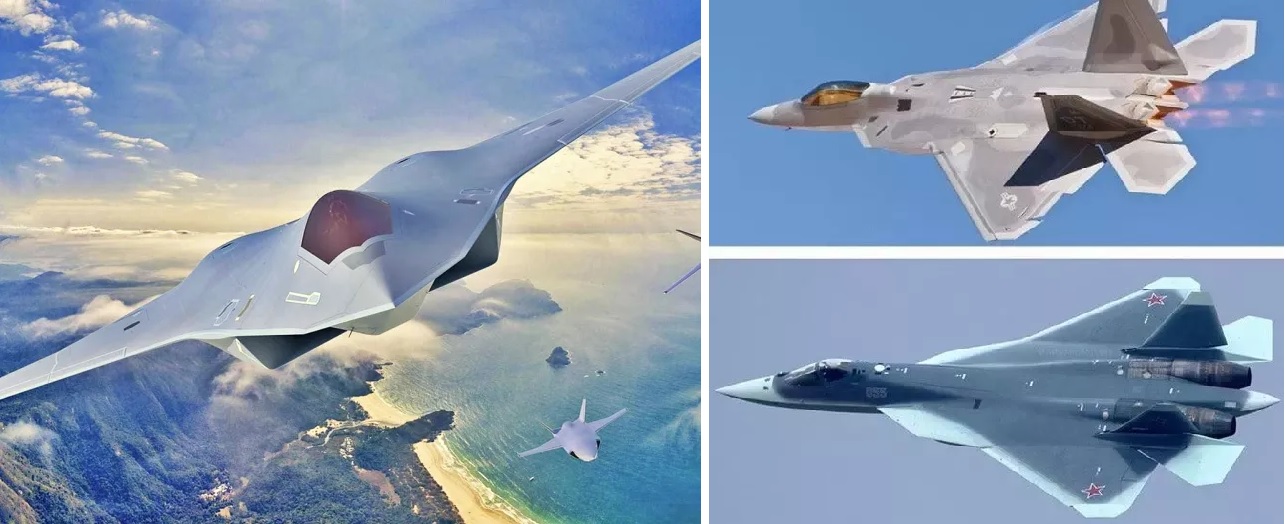 Key Differences Between 5th vs. 6th Generation Fighter Jets
Key Differences Between 5th vs. 6th Generation Fighter Jets
-
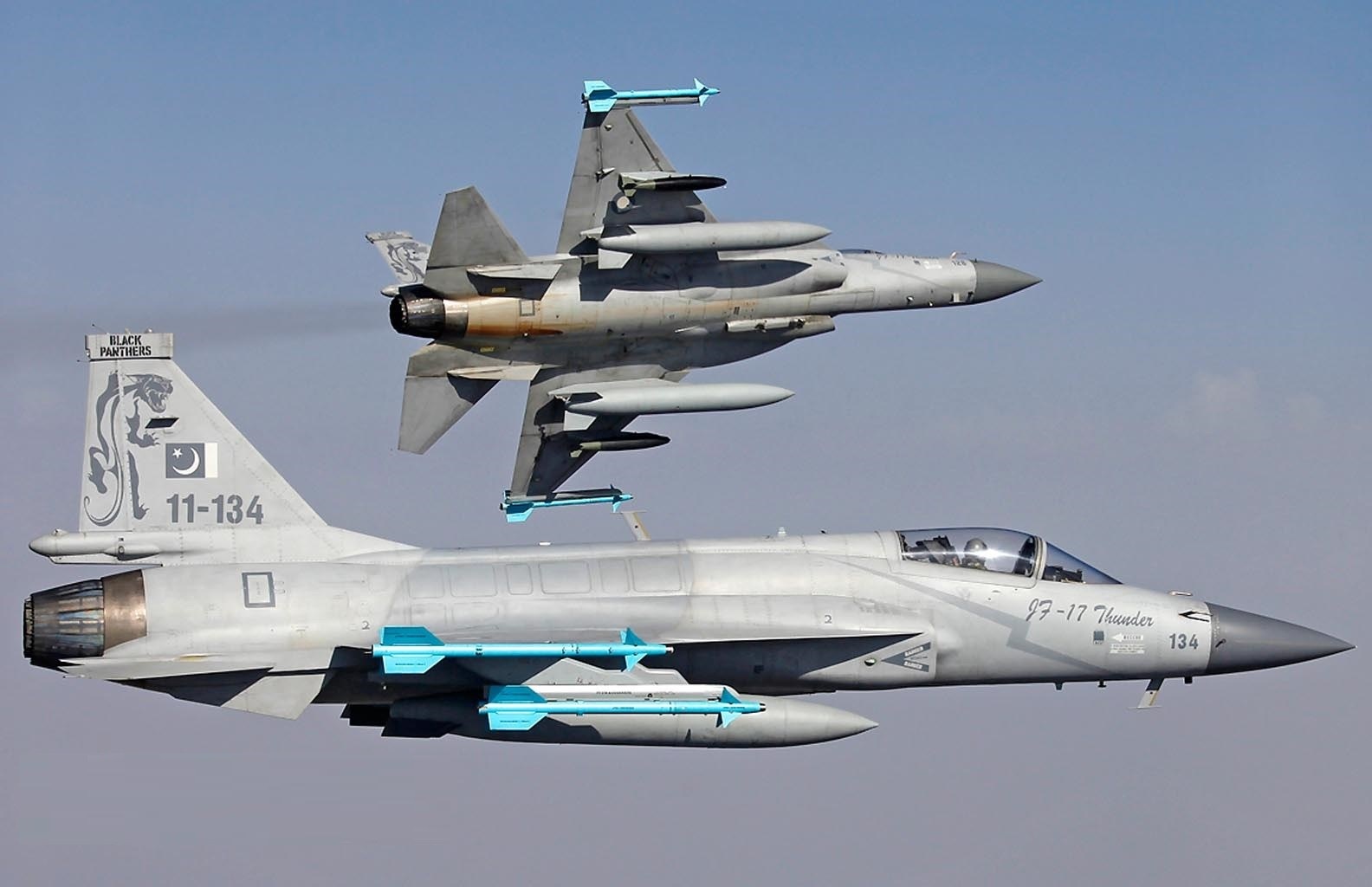 Pakistan Air Force to Unveil Stealth-Enhanced JF-17 Block 4 Fighter Jet by 2028
Pakistan Air Force to Unveil Stealth-Enhanced JF-17 Block 4 Fighter Jet by 2028
-
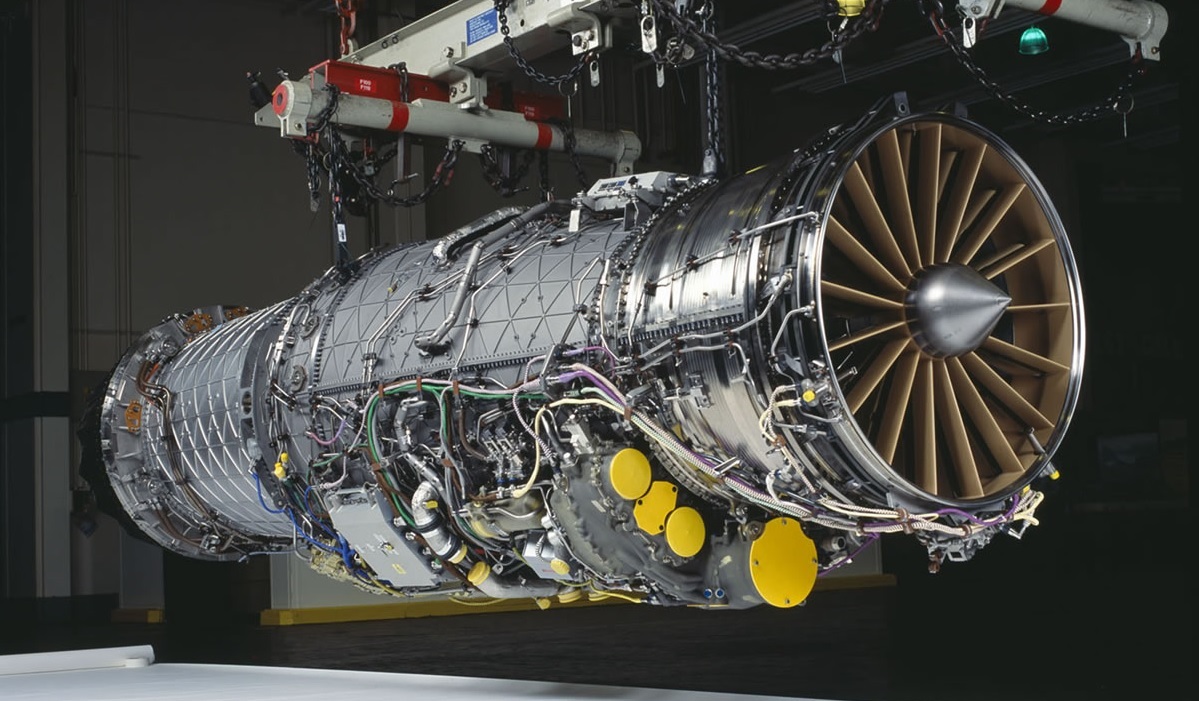 India’s AMCA Engine Decision: Safran vs. Rolls-Royce Final Expected by 2025
India’s AMCA Engine Decision: Safran vs. Rolls-Royce Final Expected by 2025
-
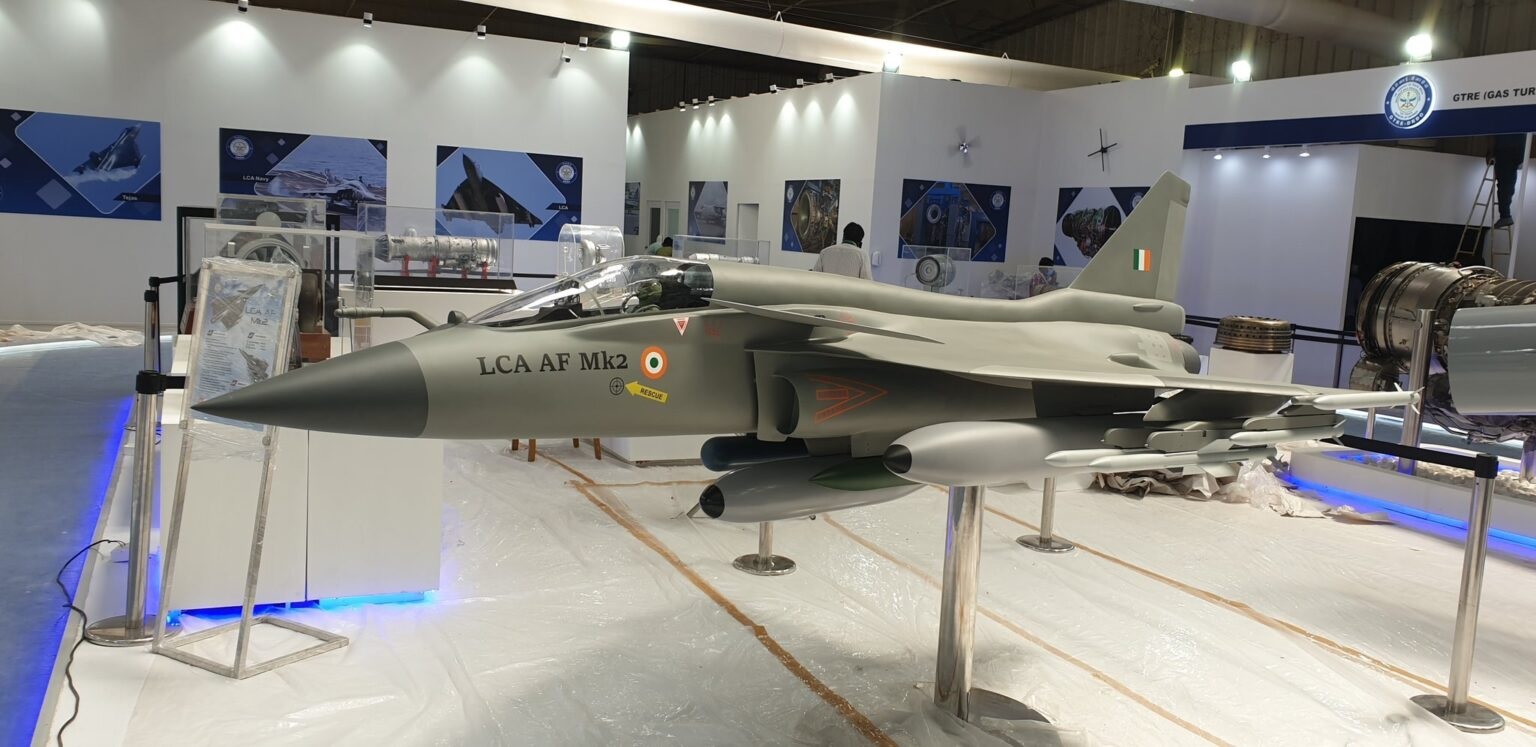 Tejas Mk2 Nears 2025 Rollout as HAL Ramps Up Final Assembly and System Integration
Tejas Mk2 Nears 2025 Rollout as HAL Ramps Up Final Assembly and System Integration
-
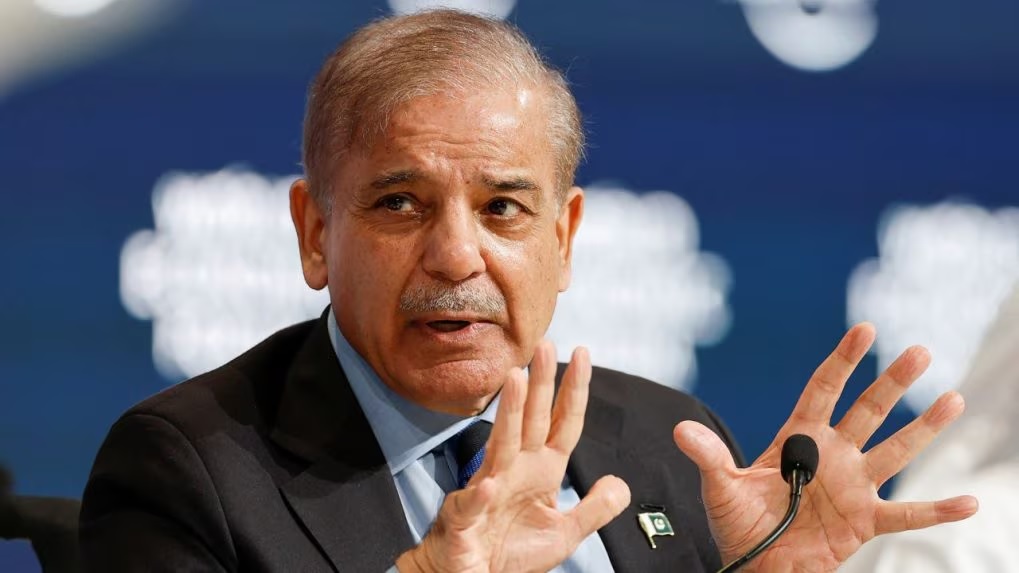 Pakistan Announces 15% Increase in Defence Budget for 2024-25 Amid Economic Crisis
Pakistan Announces 15% Increase in Defence Budget for 2024-25 Amid Economic Crisis
-
 India's TEDBF Program Takes Shape First Flight by 2028: Aiming for Naval Supremacy with Advanced Stealth and Technology
India's TEDBF Program Takes Shape First Flight by 2028: Aiming for Naval Supremacy with Advanced Stealth and Technology
Top Trending in 4 Days
-
 U.S. Congress Passes Defence Bill Locking American Troops Into Europe, Backing Ukraine, Limiting Trump
U.S. Congress Passes Defence Bill Locking American Troops Into Europe, Backing Ukraine, Limiting Trump
-
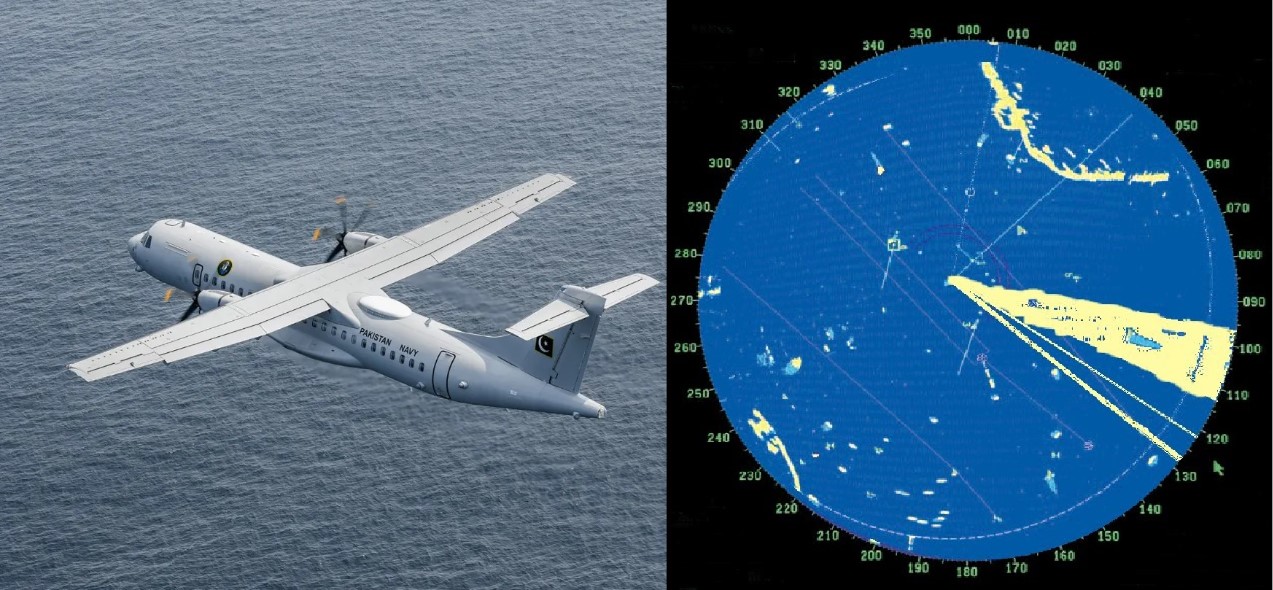 Unknown System Completely Jams Pakistan Navy ATR-72 Sea Eagle Communications During Naval Exercise
Unknown System Completely Jams Pakistan Navy ATR-72 Sea Eagle Communications During Naval Exercise
-
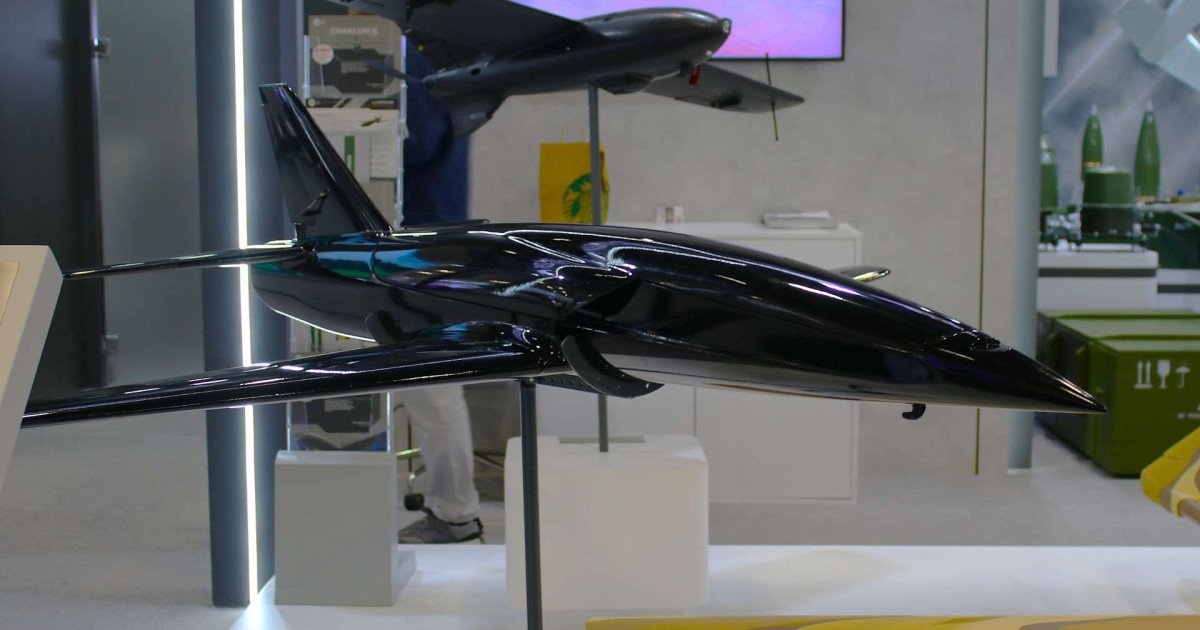 Ukraine Unveils Mass-Produced ‘Bullet’ Interceptor Drone to Counter Russian Shahed and Geran Drones
Ukraine Unveils Mass-Produced ‘Bullet’ Interceptor Drone to Counter Russian Shahed and Geran Drones
-
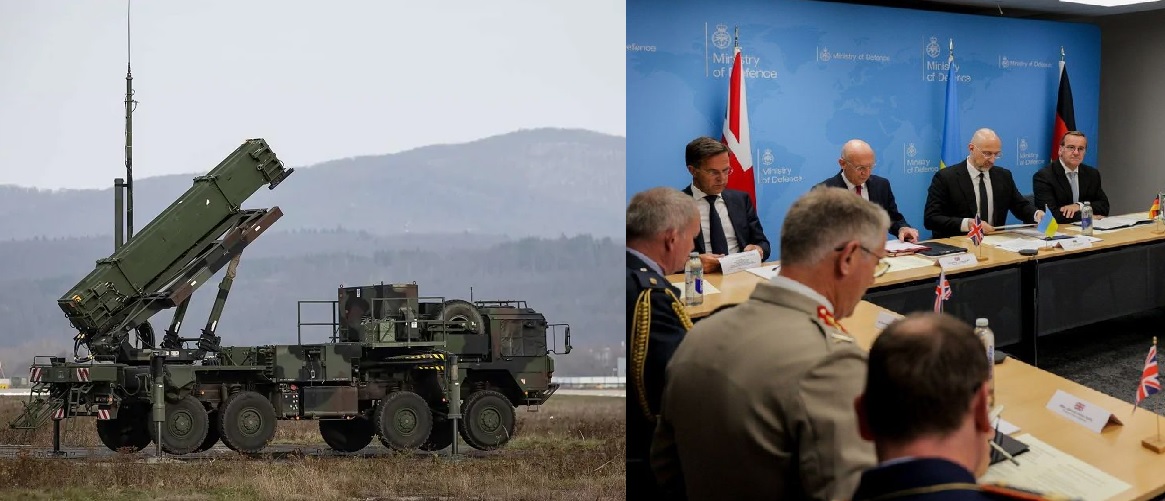 Germany Delivers New Air Defence Systems as UK Unveils £600m Military Aid for Ukraine at Ramstein
Germany Delivers New Air Defence Systems as UK Unveils £600m Military Aid for Ukraine at Ramstein
-
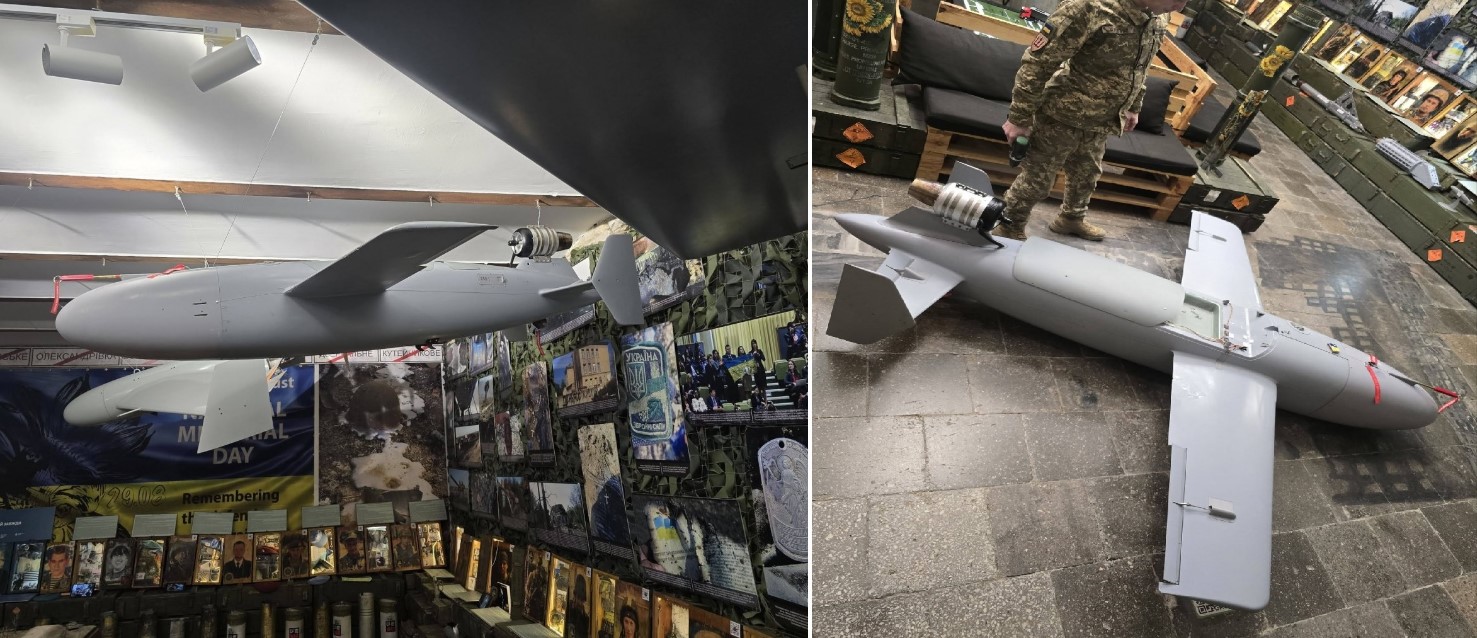 Ukraine Publicly Reveals ‘Bars’ Cruise Missile as Zelensky Highlights Expanding Long-Range Strike Capability
Ukraine Publicly Reveals ‘Bars’ Cruise Missile as Zelensky Highlights Expanding Long-Range Strike Capability
-
 Russia Deploys Entire Nuclear Icebreaker Fleet, Securing Year-Round Arctic Energy Exports
Russia Deploys Entire Nuclear Icebreaker Fleet, Securing Year-Round Arctic Energy Exports
-
 Pakistan Army to Deploy Troops to Gaza by January 2026 Under Trump–Munir Deal, $500 Per Soldier
Pakistan Army to Deploy Troops to Gaza by January 2026 Under Trump–Munir Deal, $500 Per Soldier
-
 EU Approves €90 Billion Loan for Ukraine After Marathon Talks, Leaves Russian Assets Untouched
EU Approves €90 Billion Loan for Ukraine After Marathon Talks, Leaves Russian Assets Untouched


